Great Moose Lake and its main outlet, the West Branch of the Sebasticook River, have served Hartland for over two centuries as an invaluable natural resource for power, economic development, year round sporting and both full-time and part-time residences.
*
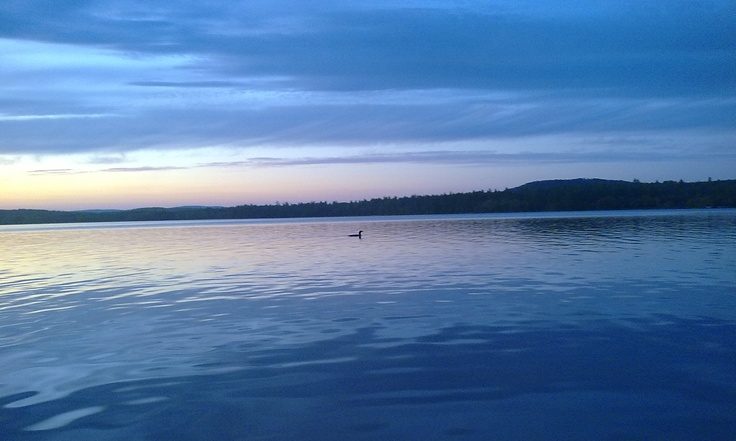
Sunset on Great Moose Lake
(Photo courtesy of Great Moose Lake Association)
*
Great Moose Lake, as it is most commonly known today, has also been identified as Moose Pond or Great Moose Pond over the decades. Locally, it is often referred to as the “Upper Lake” & “Lower Lake” divided by “The Narrows”. The 3,584 acre pristine body of water is bordered by Hartland, St Albans, Harmony and Athens. The discovery of numerous artifacts including arrowheads left behind by Native Americans reveal the lake was used by these indigenous peoples for thousands of years before the first “white” settlers arrived to survey the region in the late 1770s.
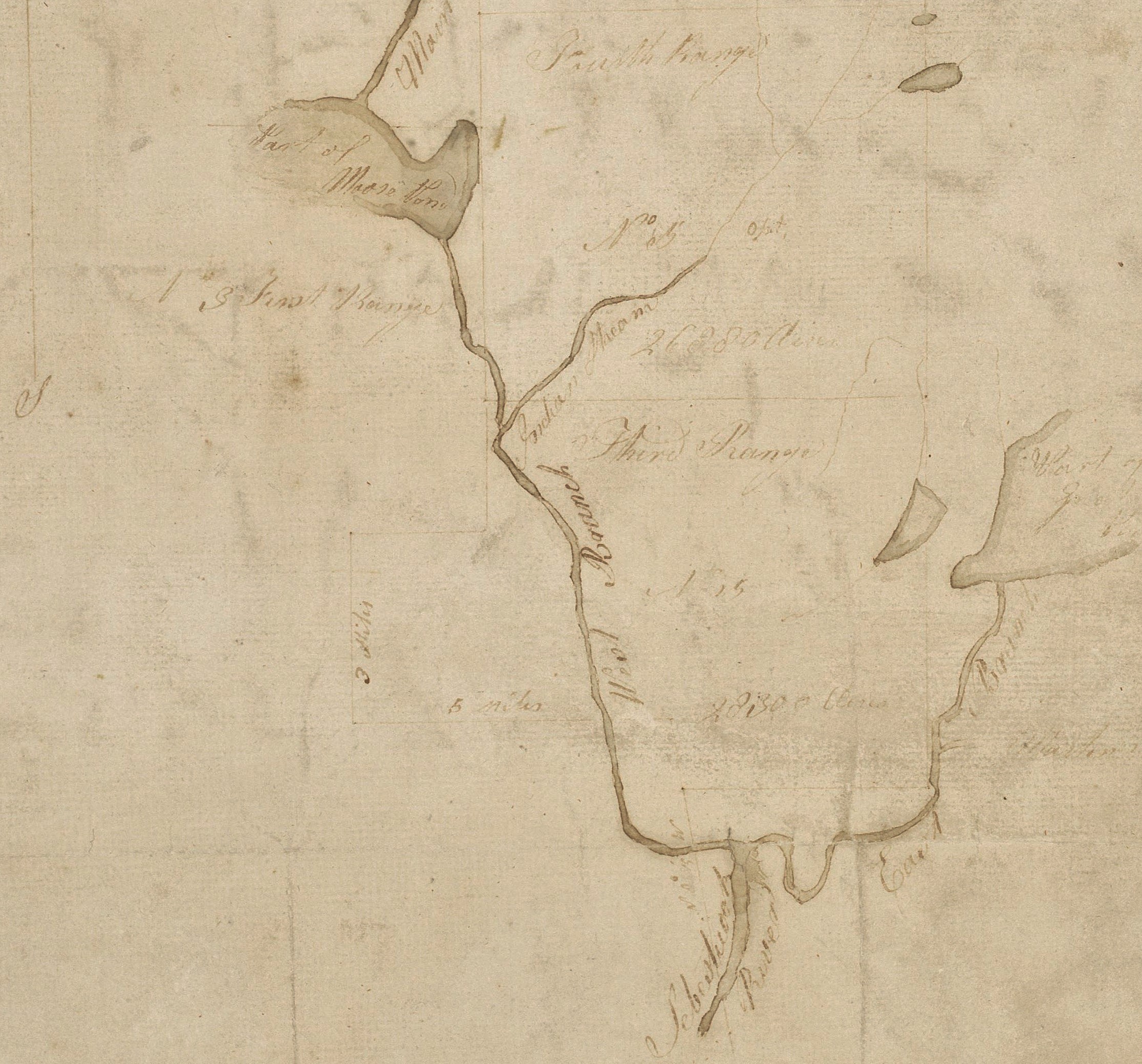
One of the oldest known Surveyor Map of the Region by Ephraim Ballard – 1779
*
Main Stream, Brown Brook & Higgins Brooks are major inlets which feed Great Moose Lake from its northern shores in Harmony.

Main Stream Inlet to Great Moose Lake
*
The original surveyed town boundaries surrounding Great Moose Lake changed substantially after settlement began in the region in 1802.
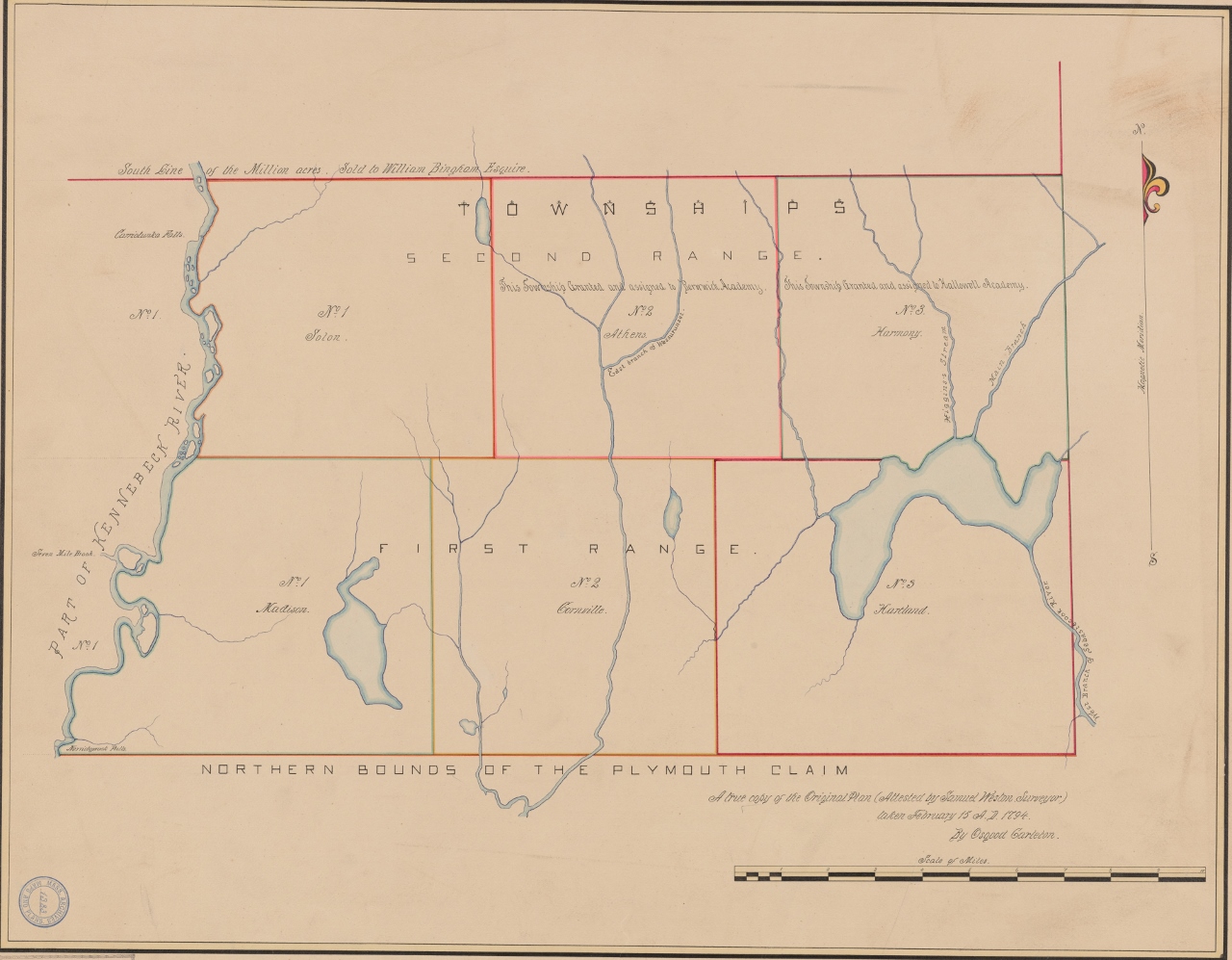
1794 Survey Map by Samuel Weston as later redrawn by Osgood Carleton
*
For original maps and further detailed border history, see our Maps page.
*
Along with the inlets from its northern border, there are 3 other inlets along its southern border in North Hartland including Black Stream from the west, Withee Brook from Stafford & Mud Pond and another unnamed stream from Starbird Pond.
Great Moose Lake’s primary outlet is the West Branch of the Sebasticook River which flows through Hartland Village meeting up with the East Branch of the Sebasticook River at the Pittsfield & Detroit border then eventually draining into the Kennebec River in Winslow.
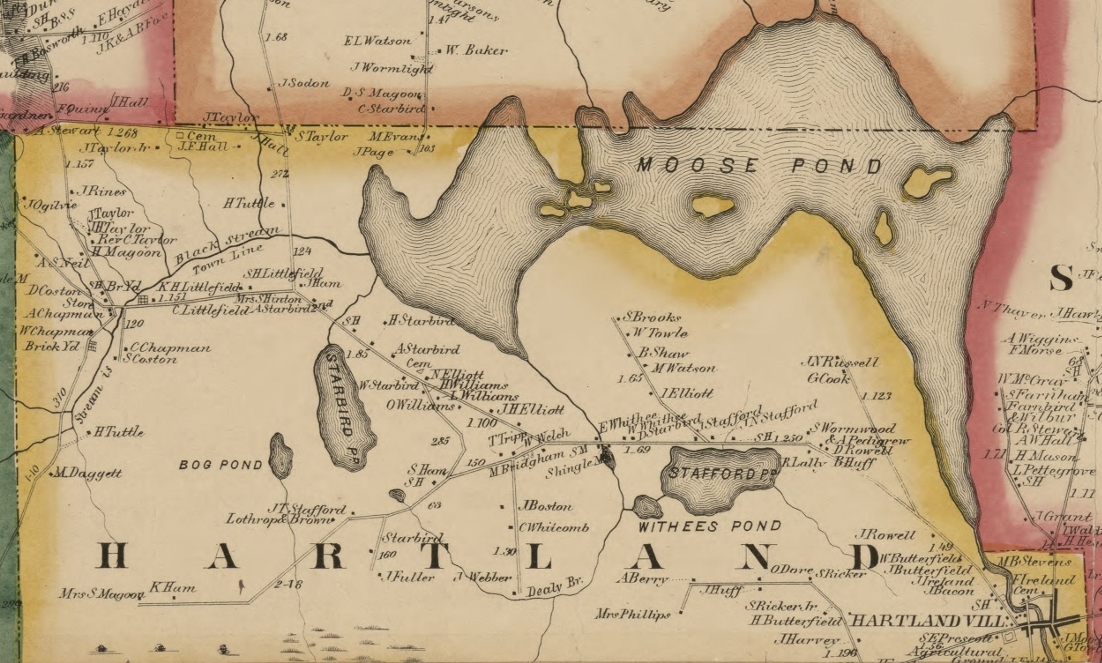
Great Moose Lake – Starbird Pond – Stafford Pond- 1860
*
Black Stream would eventually become the natural town line boundary between Hartland & Athens.
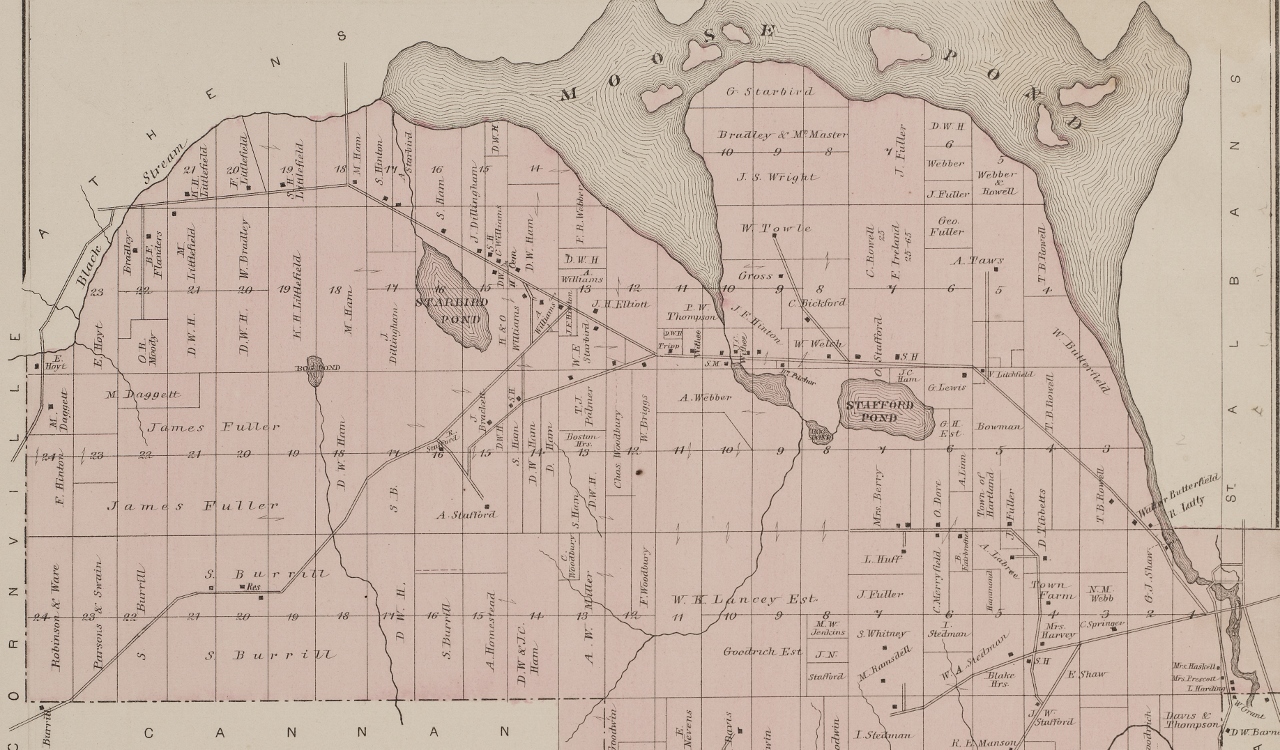
Great Moose Lake – Starbird Pond – Stafford Pond- 1883
*
The lake’s natural shoreline boundaries were somewhat smaller before man-made dams were built downstream on the Sebasticook River following settlement in Hartland. Soon after William Moor first came to Hartland (then a part of St Albans), he built a sawmill along the banks of the Sebasticook River where he had constructed a small dam on the Commercial Street side of the island to power his mill. A larger addition to the first dam was later built on the other side of the river’s island enabling controlled water flow of the river through the village.
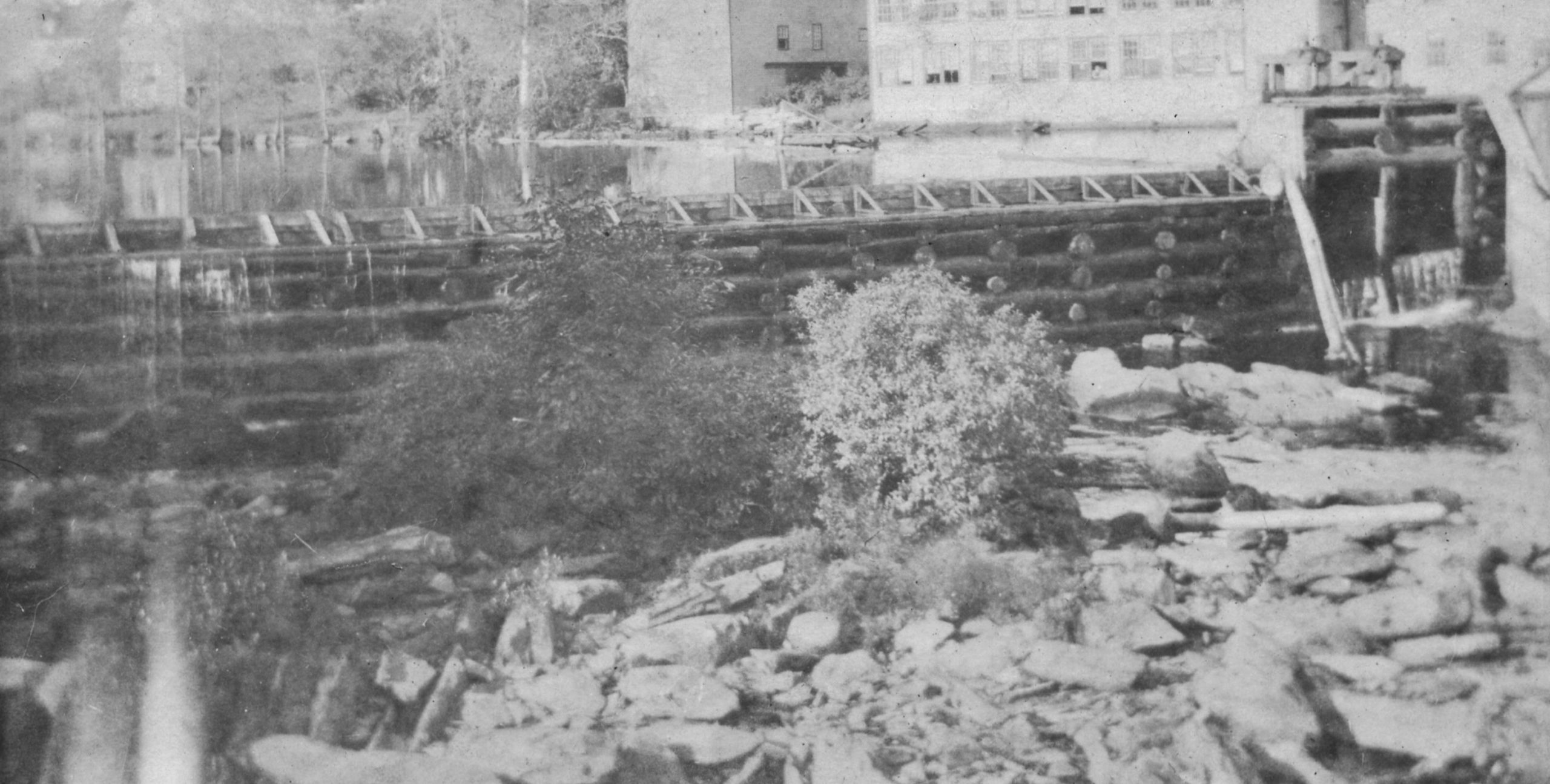
Lower Dam addition on the Sebasticook River on Main Street – c1910
*
The Island seen with both dams on the Sebasticook River which supported numerous businesses on Main Street.
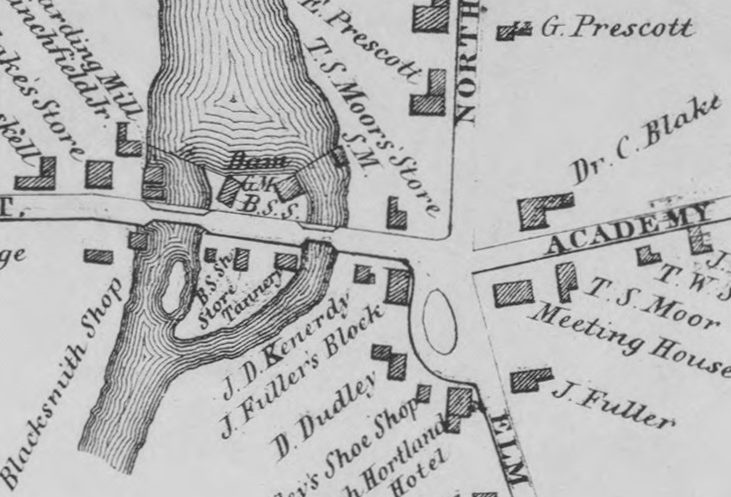
Hartland Village – 1860
*
Around 1825, William Moor’s son, James Moor, built an Upper Dam dam further up the river at Mill Street where he built a sawmill. His sons, Amasa J. Moor & James W. Moor, later added several other structures where they built furniture, caskets and numerous other wood products. The Upper Dam especially influenced the lake’s original shoreline boundaries and depth and would consequently induce occasional floods.
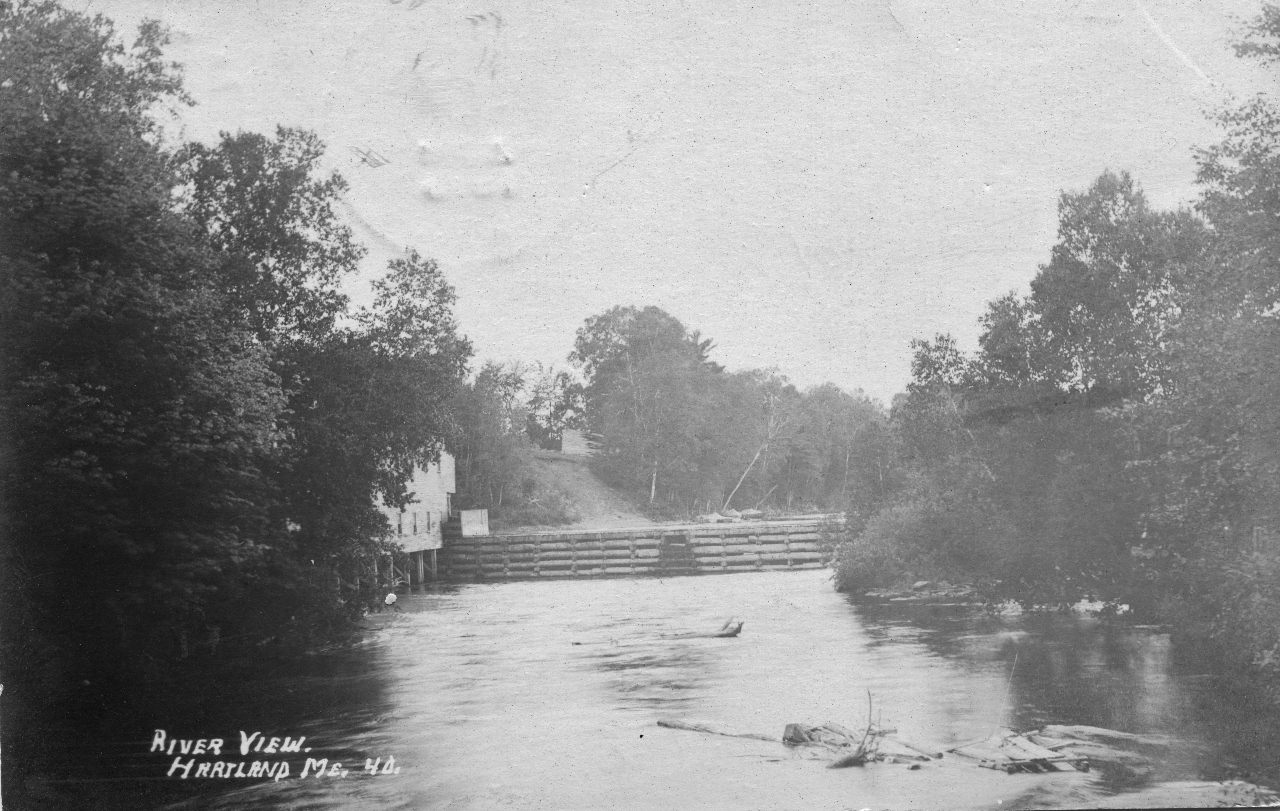
Upper Dam on the Sebasticook River seen from Mill Street – c1910
*
While the dams were considered progress by most folks in Hartland, they did not please everyone; especially those upstream with existing property around the original shallower lake. One case in particular was the Hight Family who were some of the original settlers of Harmony. They would lose vast amounts of family farming land along the northern shoreline of the lake due to the new higher water levels. It is told they strongly opposed the dams on the river but were unsuccessful in their legal attempts to thwart its progress and their lands were gone forever. “Hight Rock” was once a part of the dry farmland along the shoreline and is now mostly submerged underwater.

Descendants of the original Harmony Hight Family (L-R): Brothers Pliny, Clement, Cassius & John Hight – 1930s
*
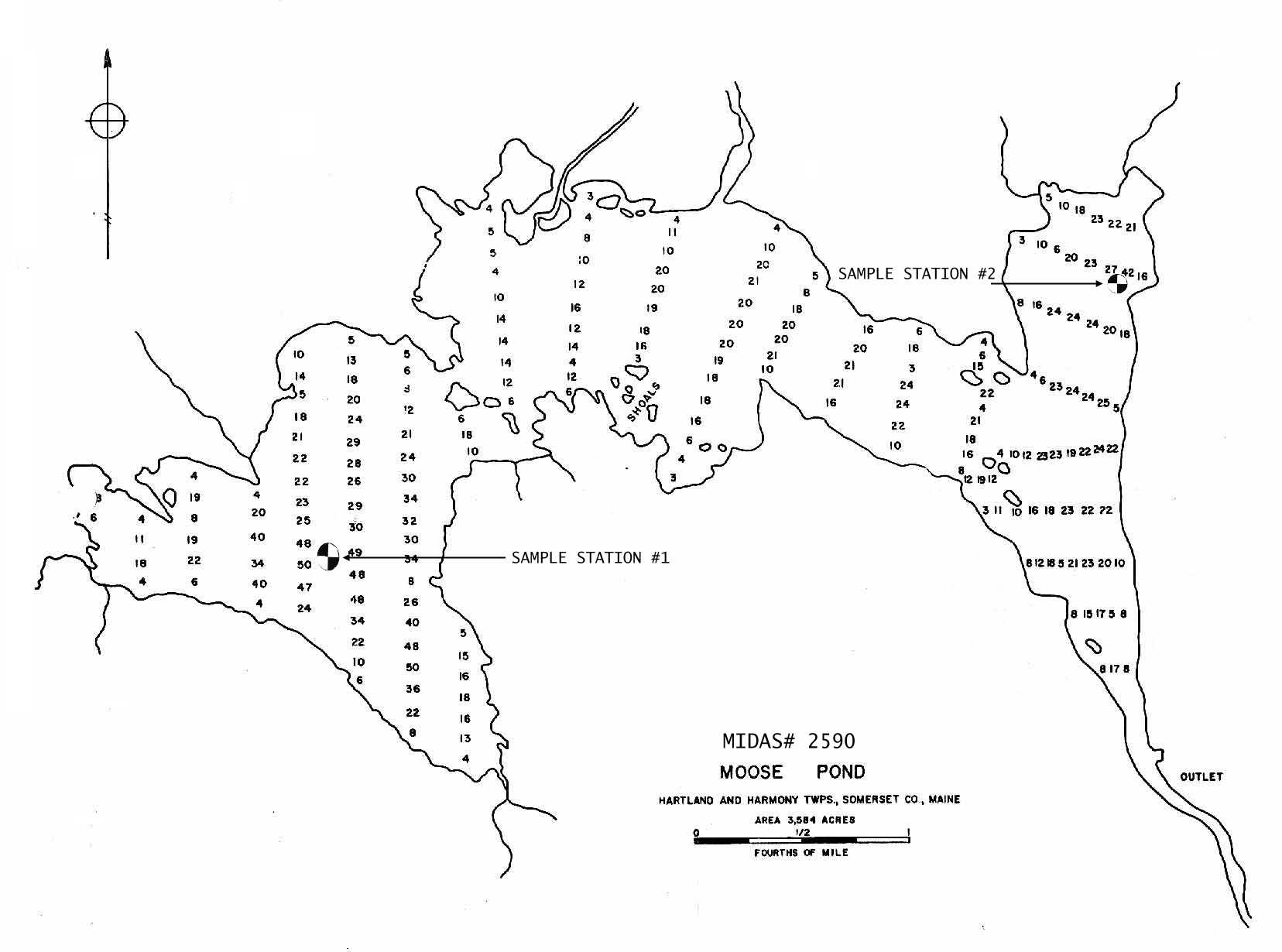
Great Moose Lake Depth Chart – 1955
*
Boat launches of some type near the Upper Dam on the North Street side were likely used well before the Billings’ Tannery was built in 1857. By the 1870s, Greenville J. Shaw owned the tannery and an established boat launch had been built next to it. The launch was also the home for a steamboat which made regular runs allowing passengers to travel up the Sebasticook River to Great Moose Lake.
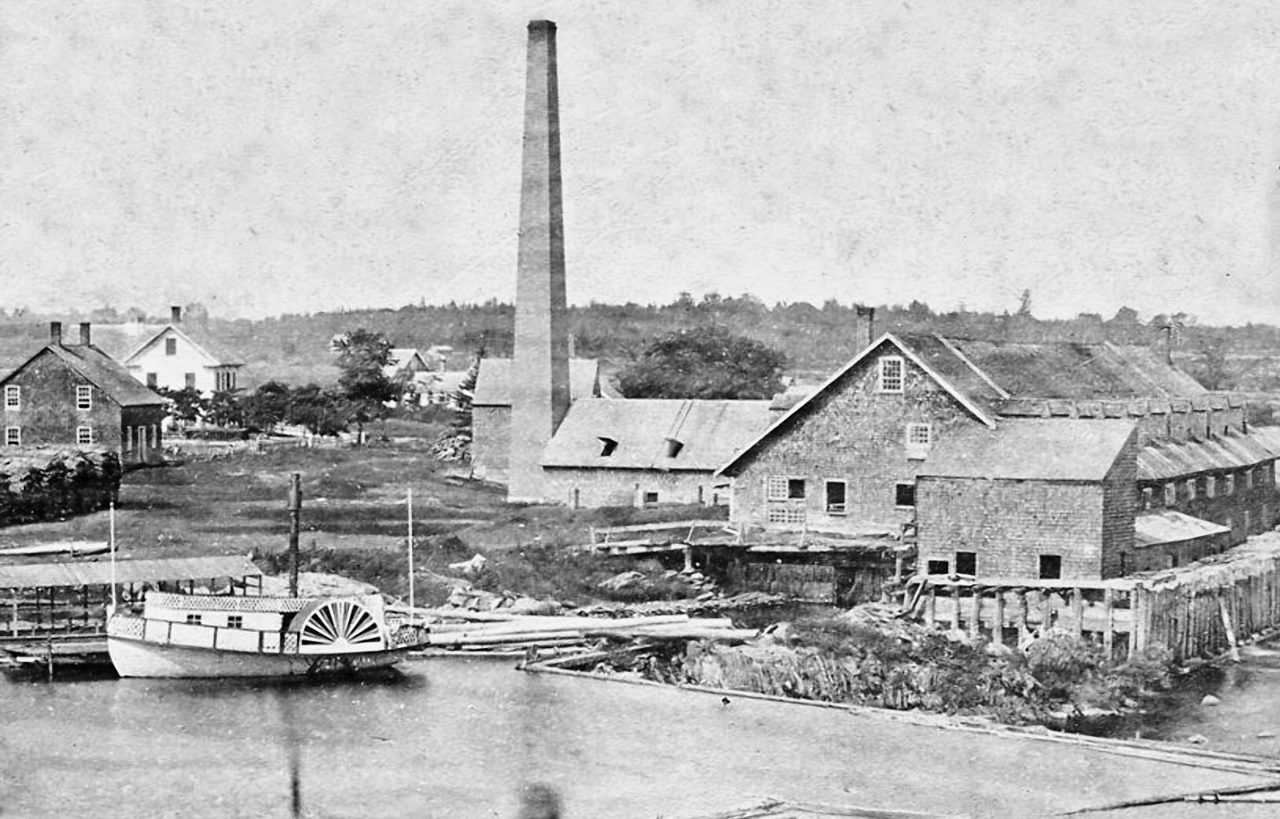
Boat Launch at Billings-Shaw Tannery on the Upper Dam – c1877
*
Public boat launches in one form or another would remain above the Upper Dam although their locations would move over the decades. Many private launches were also located along the banks of Pleasant Street where many residents had private steps to access their boats.
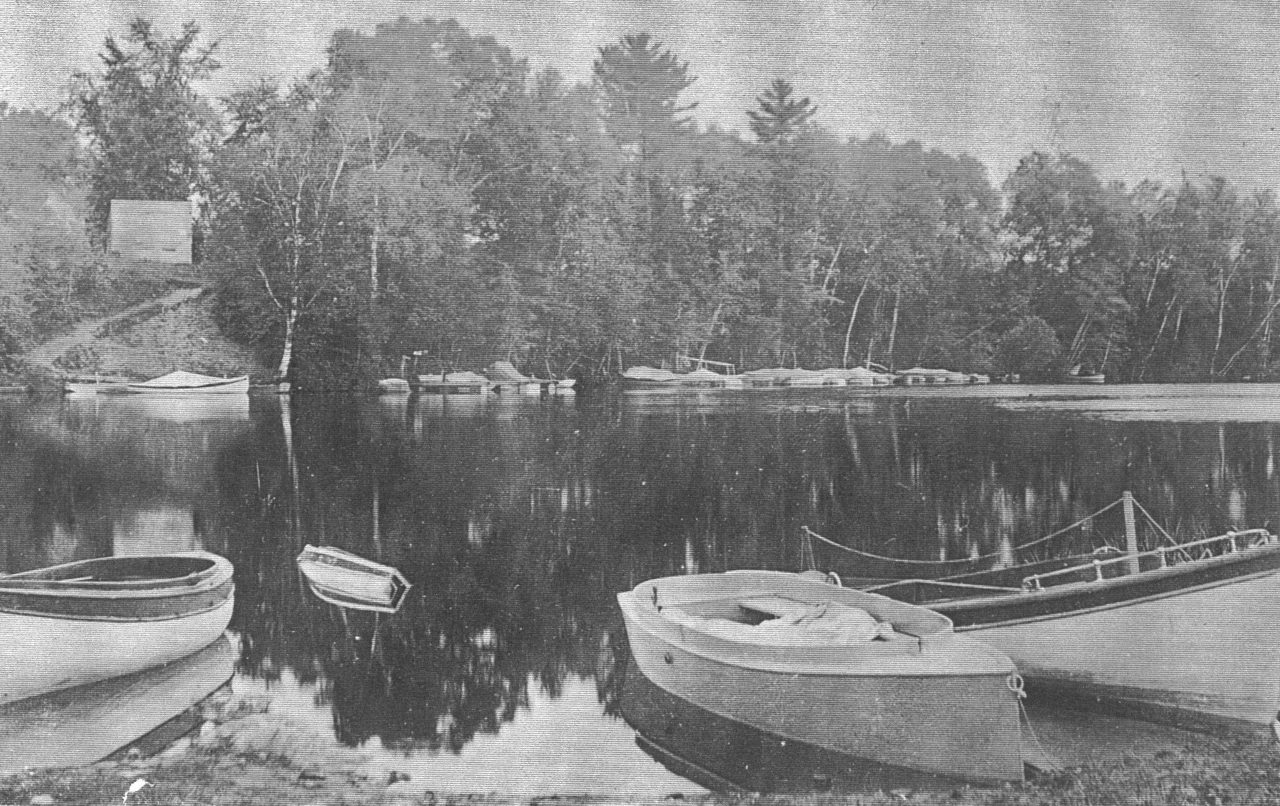
Public Boat Launches on both sides of the Sebasticook River at the Upper Dam
*
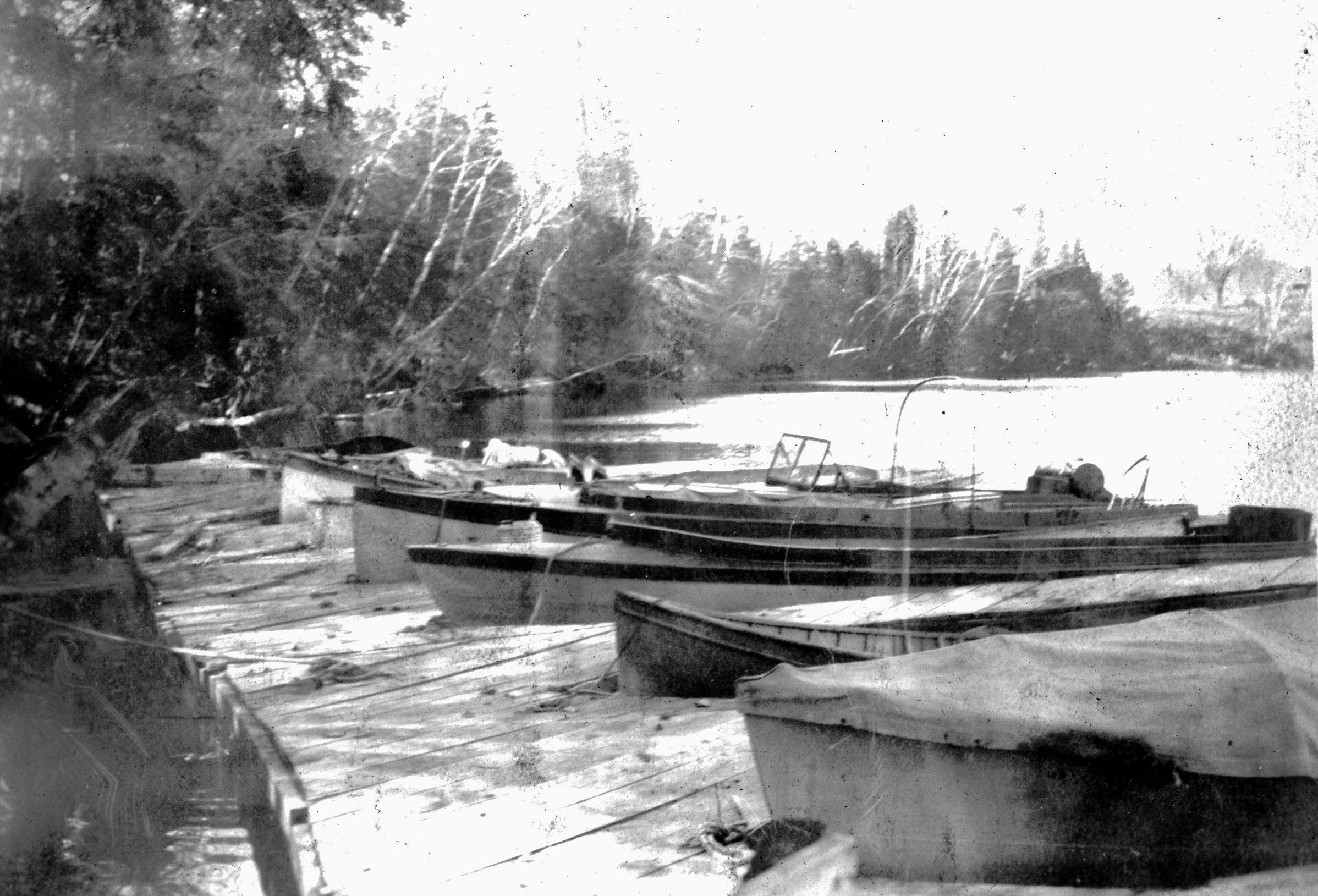
Boat Launch on Moore Street side of the Sebasticook River at the Upper Dam
*
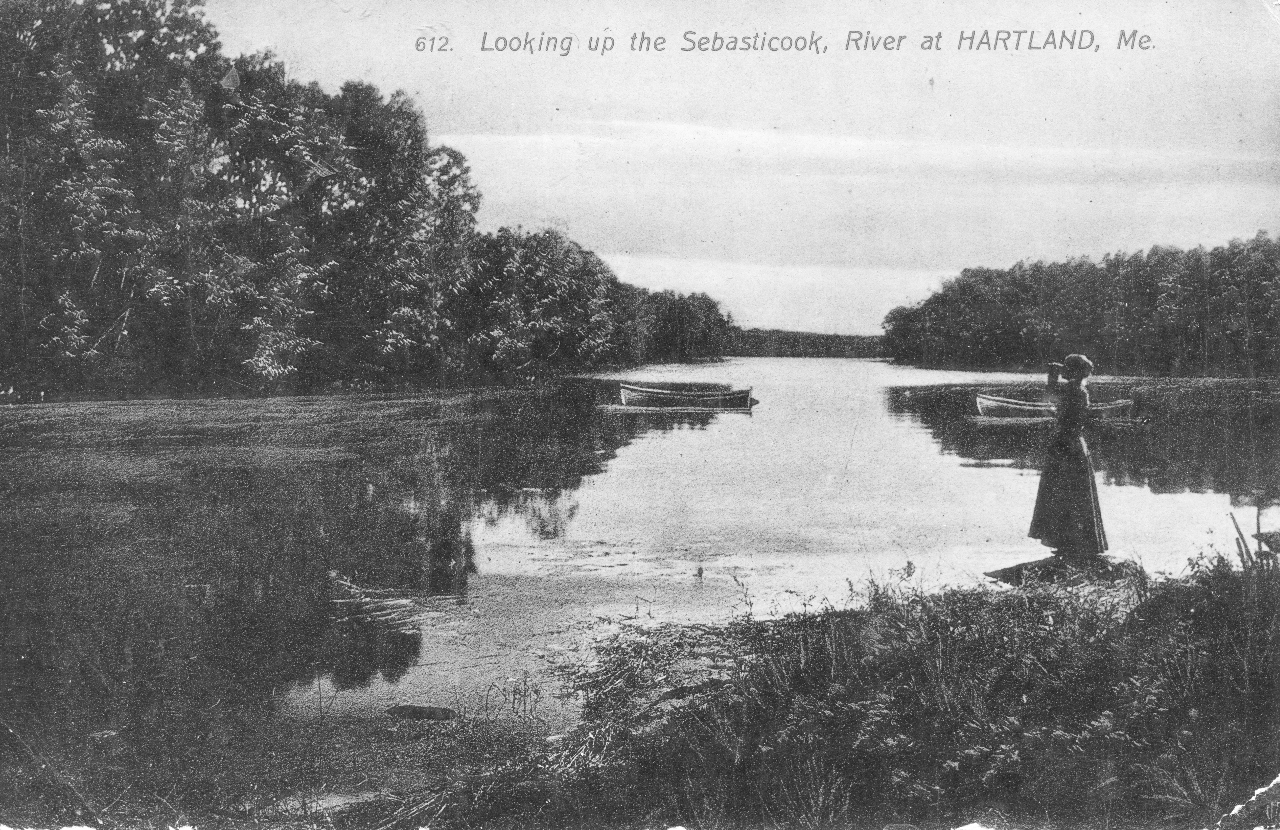
Sebasticook River View
*
In 1886, the Sebasticook & Moosehead Railroad line was built from Pittsfield into Hartland Village. It was extended from the Village in 1901 traveling along the Hartland side of the Sebasticook River before crossing into St Albans at the trestle and making its way along Great Moose Lake’s shoreline to Main Stream in Harmony. The new railroad line extension provided regular and much easier access for year round & summer residents, sportsmen and day visitors.

Sebasticook & Moosehead Railroad Trestle crossing Sebasticook River into St Albans
*
The line was subsequently extended in 1912 from Main Stream onto Harmony Village by the railroad’s new owner Maine Central Railroad.
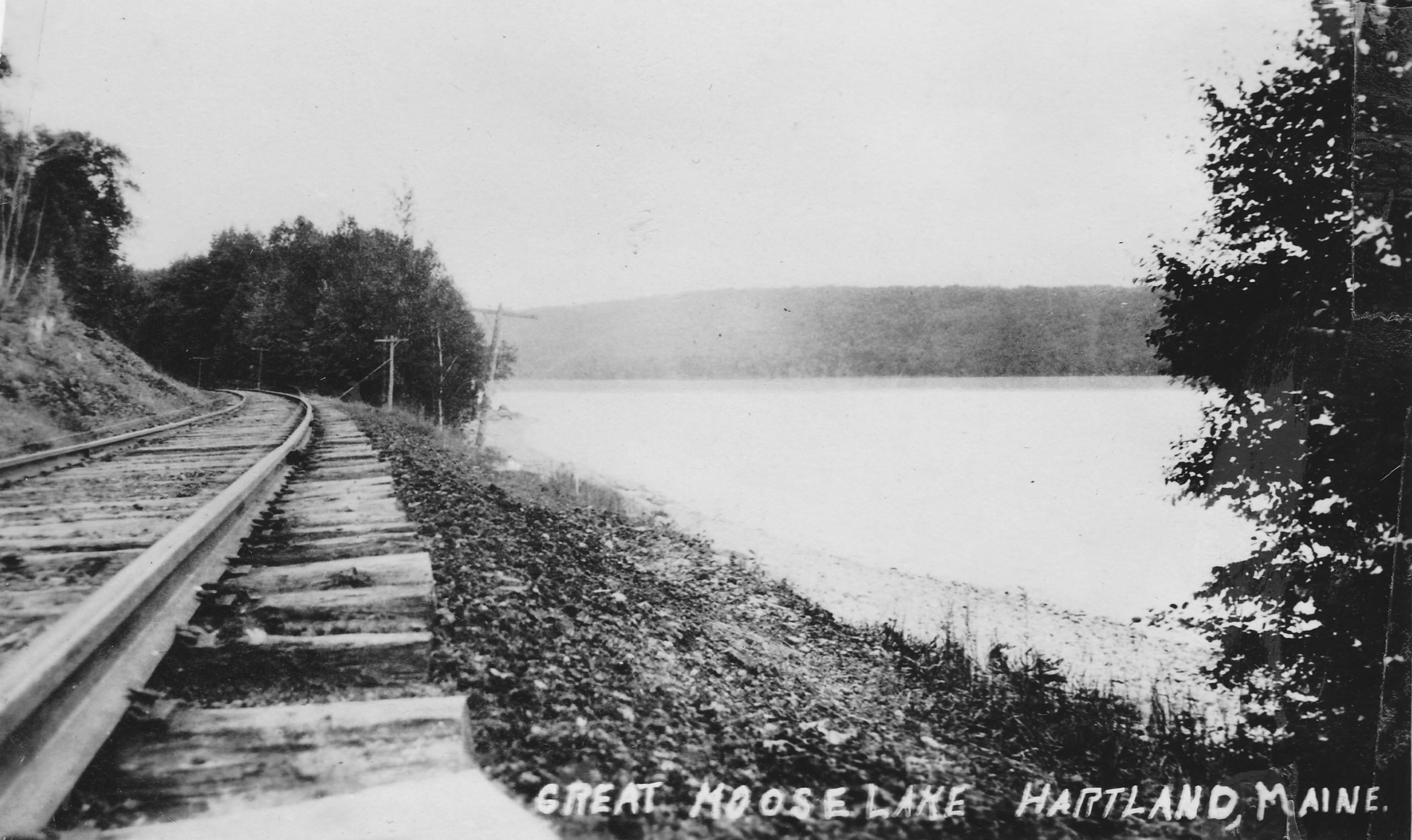
Original Sebasticook & Moosehead Railroad line along the shoreline of Great Moose Lake
*
The sound and sight of the train along the lake’s shoreline was a daily occurrence until the Harmony line extension was discontinued in 1966.
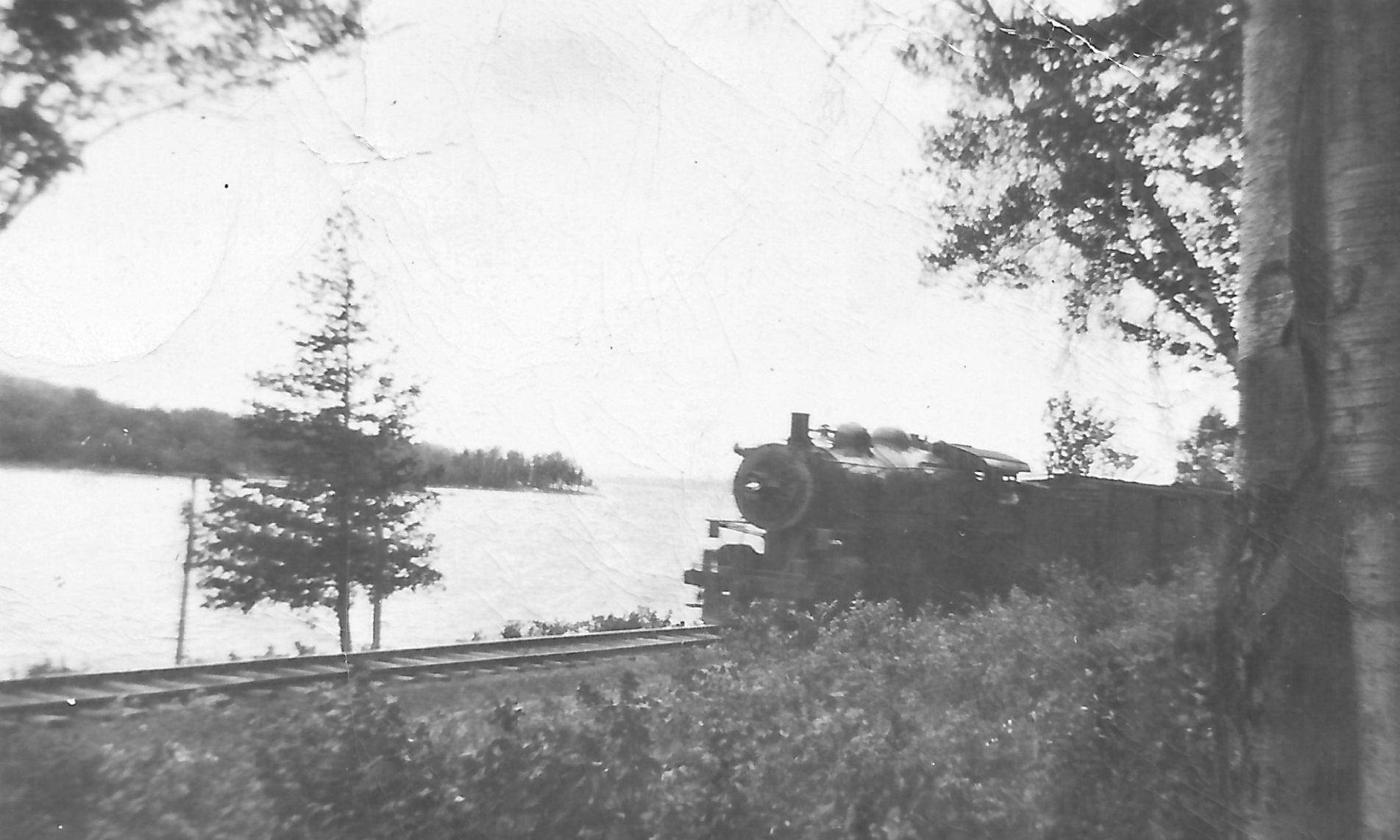
Original Sebasticook & Moosehead Railroad line along the St Albans shoreline of Great Moose Lake
*
As part of the original deal between camp lot owners and the railroad for a right of way along the shoreline, the train made unscheduled stops for passengers who used flags to summon it. Several of these small flag stop stations were located along the railroad’s shoreline run.
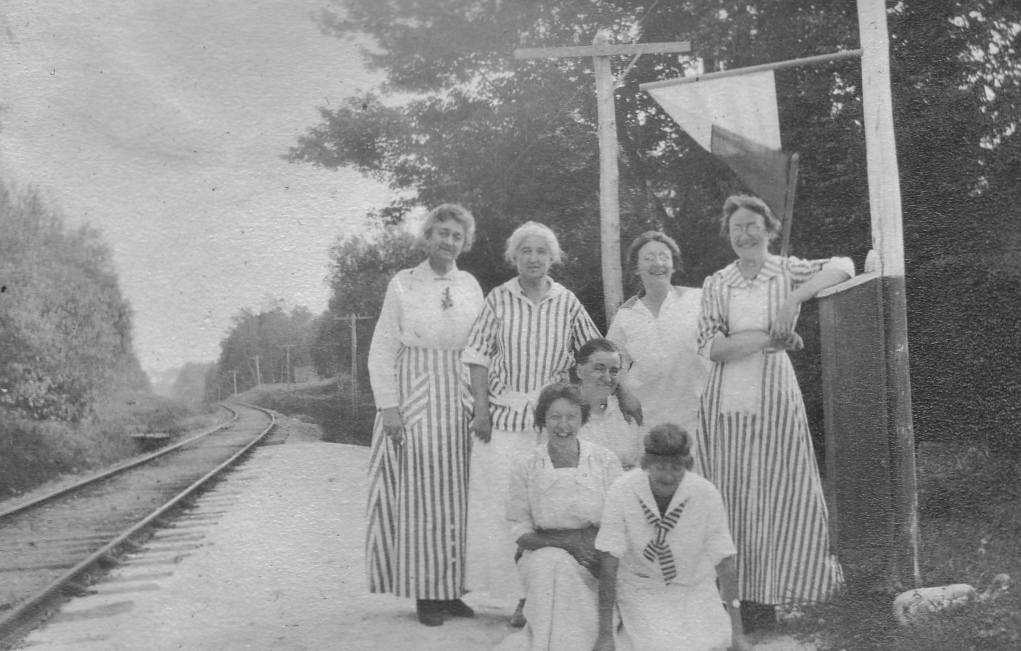
Awaiting the train in 1914 at a Flag Stop near “Camp DeLancey’
Front Row (L-R): Marion Baird, Annie (Linn) Lancey & Beatrice (Carey) Baird
Back Row: Clarabelle (Osborne) Linn, Myra (Brown) Moore, Crystal (Bowman) Deering & Elizabeth A. Linn
*
Camps have dotted the shorelines of Great Moose Lake for decades. For many locals, spending summers “Upta Camp” is a long and treasured tradition often passed down through the generations. Many “Out-of-Town” folks also make the lake their summer vacation destination to enjoy the beauty and serenity of the lake region. The addition of new or better maintained roads over the years has given reliable access to the lake enabling many people the opportunity to live there year round. Many of the older camps have wonderful stories behind their existence; some of which we have shared below. We are always seeking new stories to add to the lake’s long standing legacy of being “home”.
*
While hardly a camp by any normal standard, one of the earliest and well known buildings on Great Moose Lake is Castle Harmony Lodge built by The Wild Goose Club in 1872 on property owned by Hartland resident and businessman Archibald Linn. The club’s very well to do members, mostly from Massachusetts and New York, used the compound as their base camp while they hunted and fished in the area. They also entertained themselves and hundreds of guests for several decades at their relatively luxurious compound on the shore of Main Stream until the club disbanded during The Great Depression. The privately owned building still stands today.
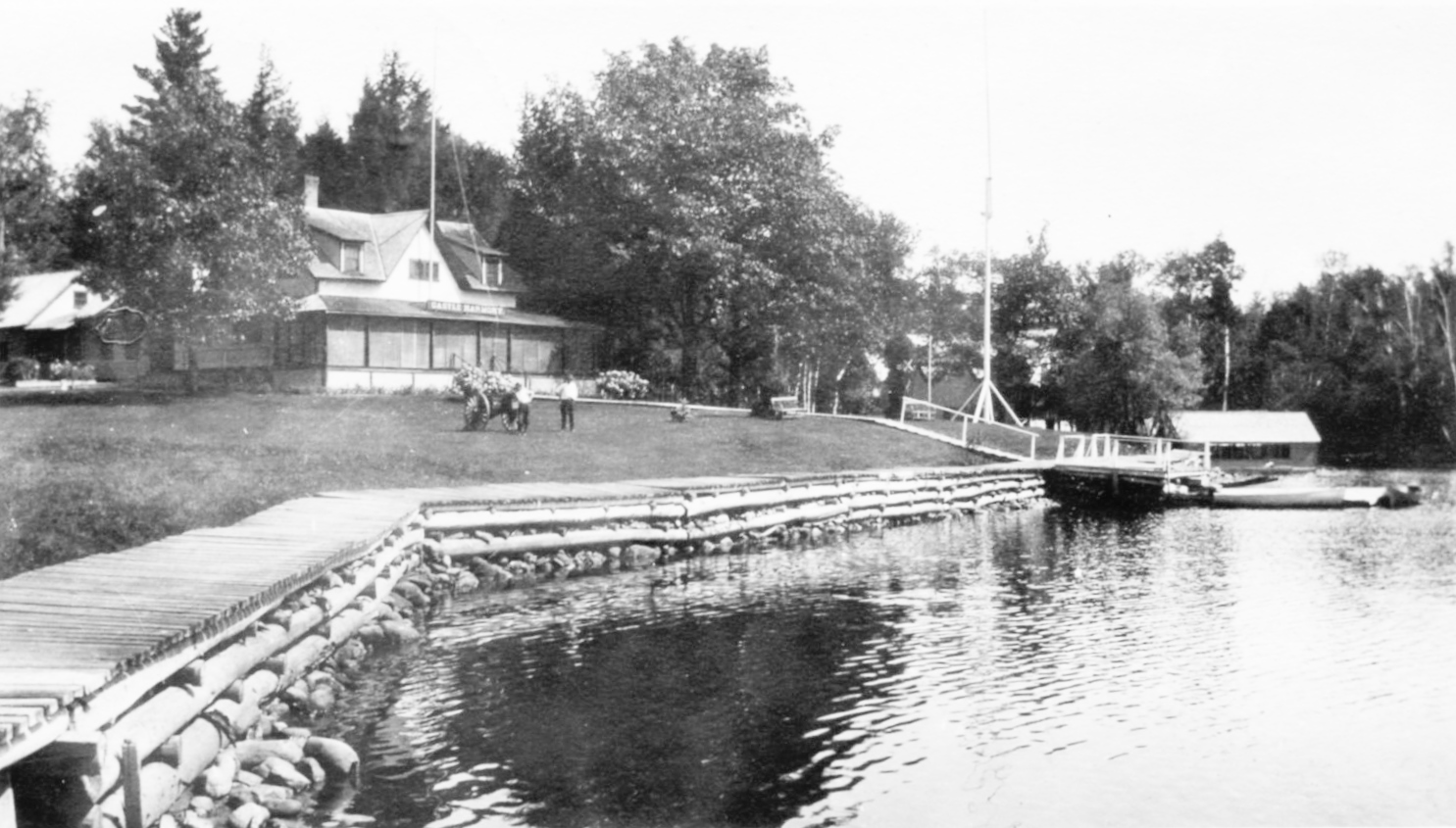
The Wild Goose Club Castle Harmony Compound on Main Stream
*
Before the railroad came to Great Moose Lake, Wild Goose Club Members & Guests traveled from the boat landing at the Upper Dam in private boats up the length of the lake where they were greeted by this welcome landmark to guide them into the “Bay of Galashiels”; the club given name of the Main Stream inlet. Since they often arrived late at night, the Light House was lit with lanterns.
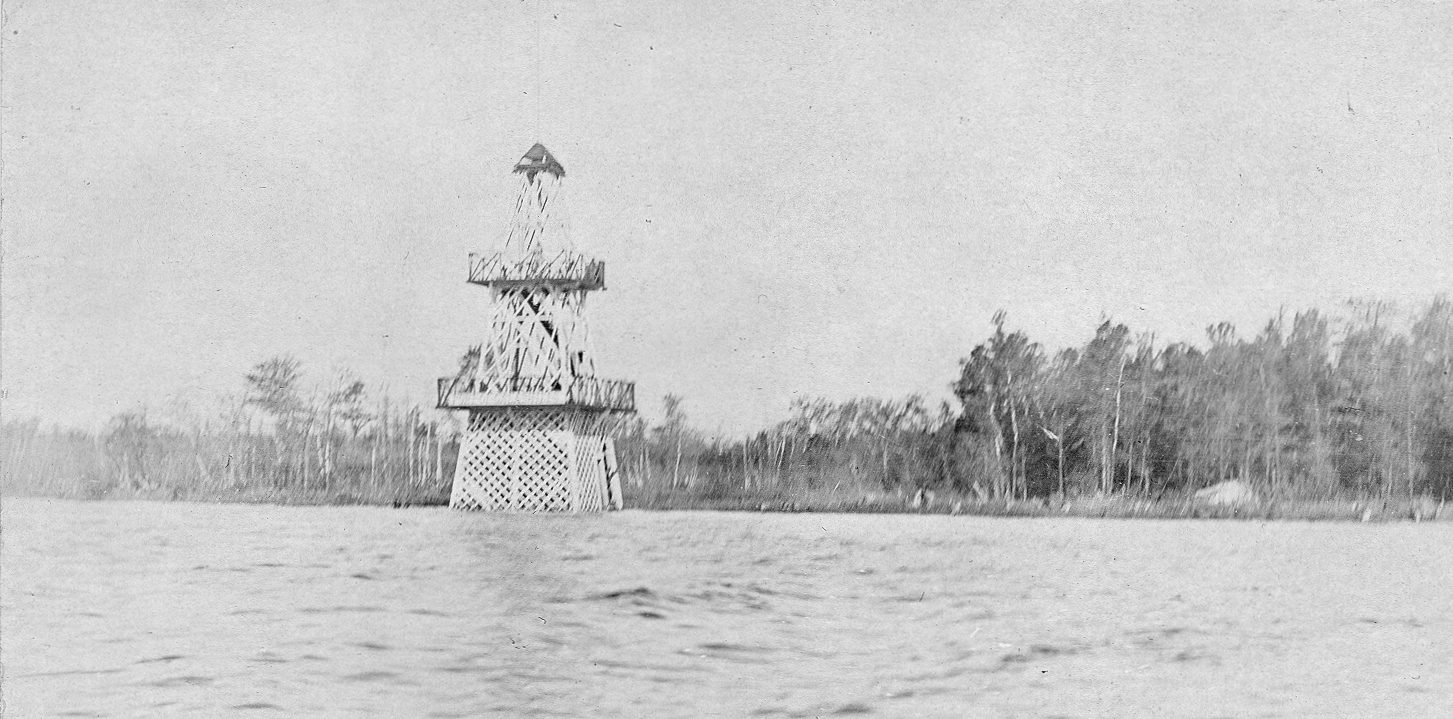
Original Castle Harmony Light House at Main Stream
*
In 1911, the Castle Harmony Light House was destroyed during a storm. An Iron Fire Tower was built in its place the following year.

Iron Fire Tower at Main Stream built in 1912
*
Portions of the framework of the iron tower can be seen today albeit nestled in the brush and trees along the shore.
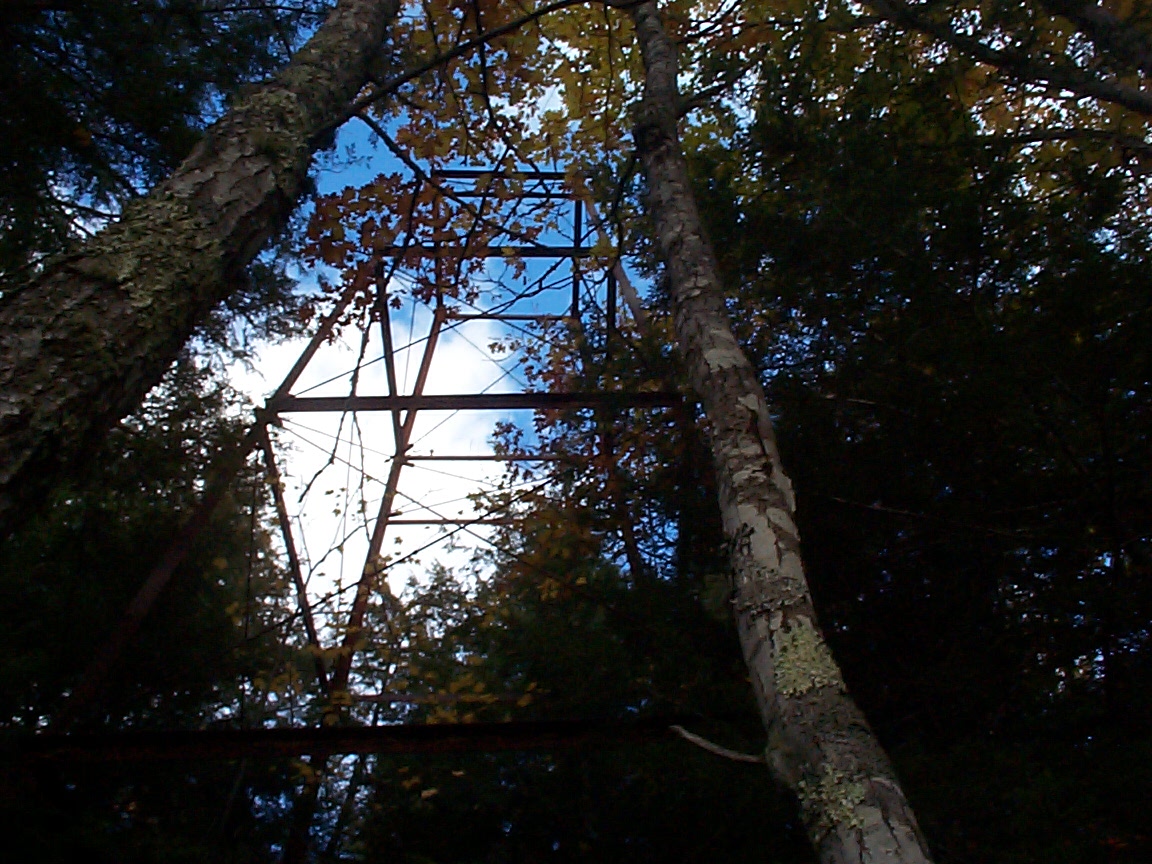
Iron Fire Tower – 2002
*
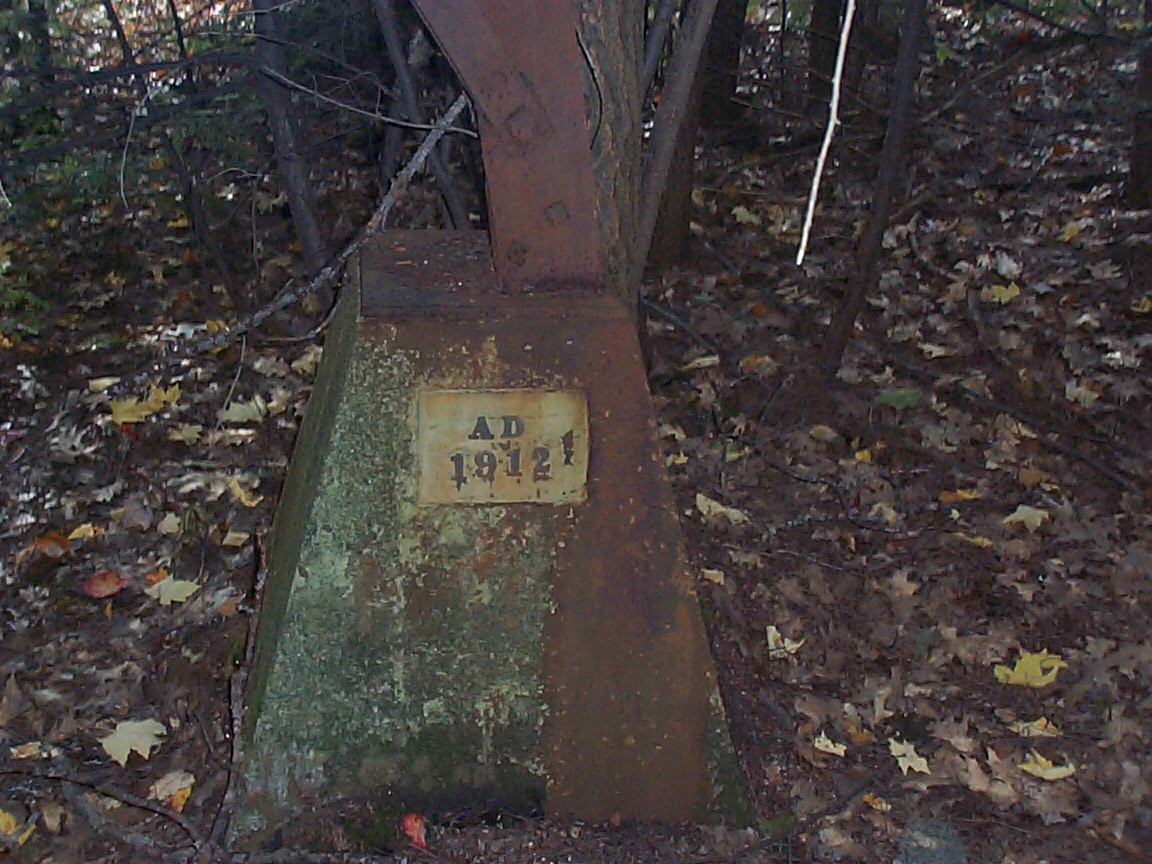
Iron Fire Tower Base – 2002
*
‘Camp Illahee’ was the original name of this well known camp built by Harry & Grace Williams of Hartland located on the St Albans shoreline of Great Moose Lake.
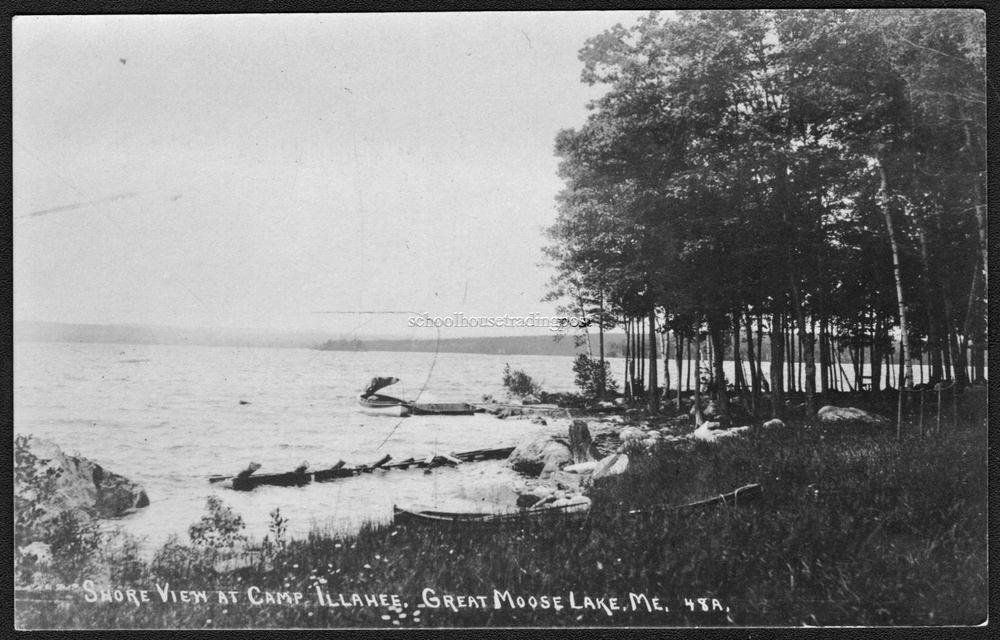
Original Camp Illahee on Great Moose Lake
*
World renowned Opera Singer Antonia Savage Sawyer of Waterville often visited her friend Grace Williams in Hartland in the late 1880s which included summer visits to Williams’ Camp on Great Moose Lake. In addition to her success as an opera singer, Antonia was also the first female Opera Manager and handled many successful singers of the day. (Photos & information courtesy of “Around Great Moose Lake” by Brenda Seekins)
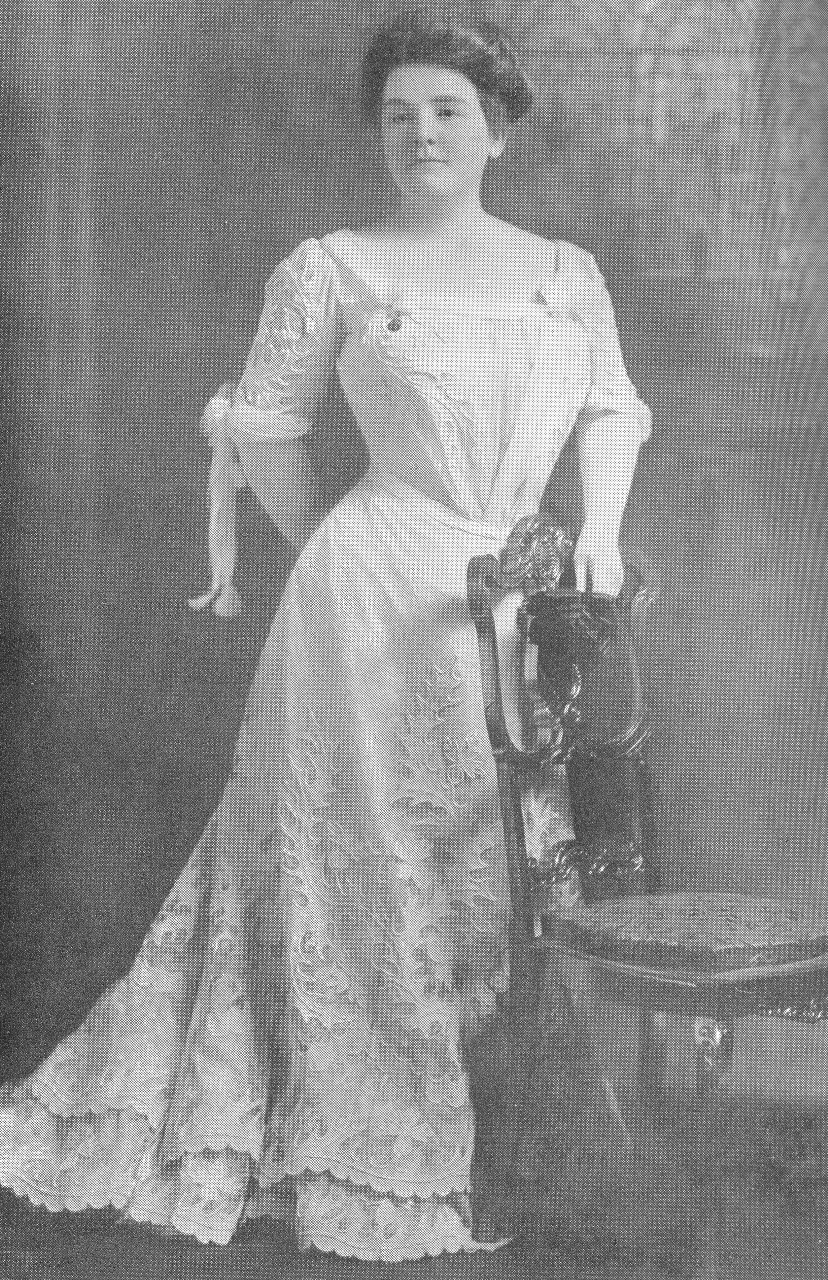
Antonia Savage Sawyer
*
In 1900, Antonia Savage Sawyer purchased ‘Camp Illahee’ and spent many summers there entertaining numerous guests.
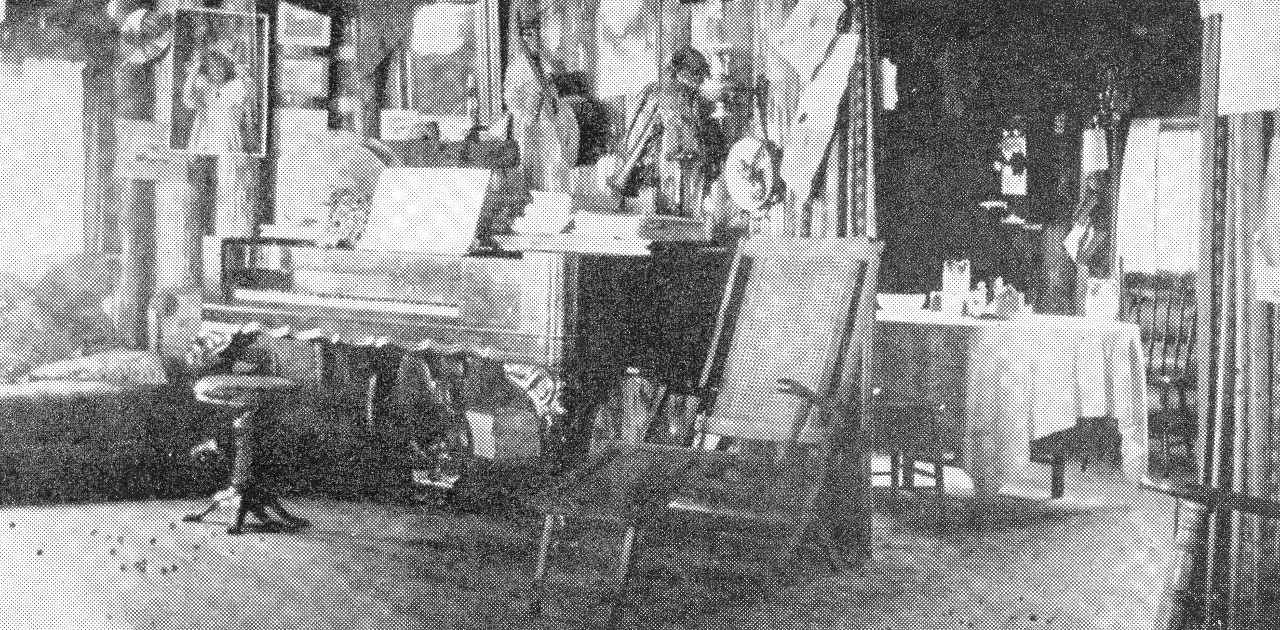
Interior of Antonia Savage Sawyer’s Camp Illahee
*
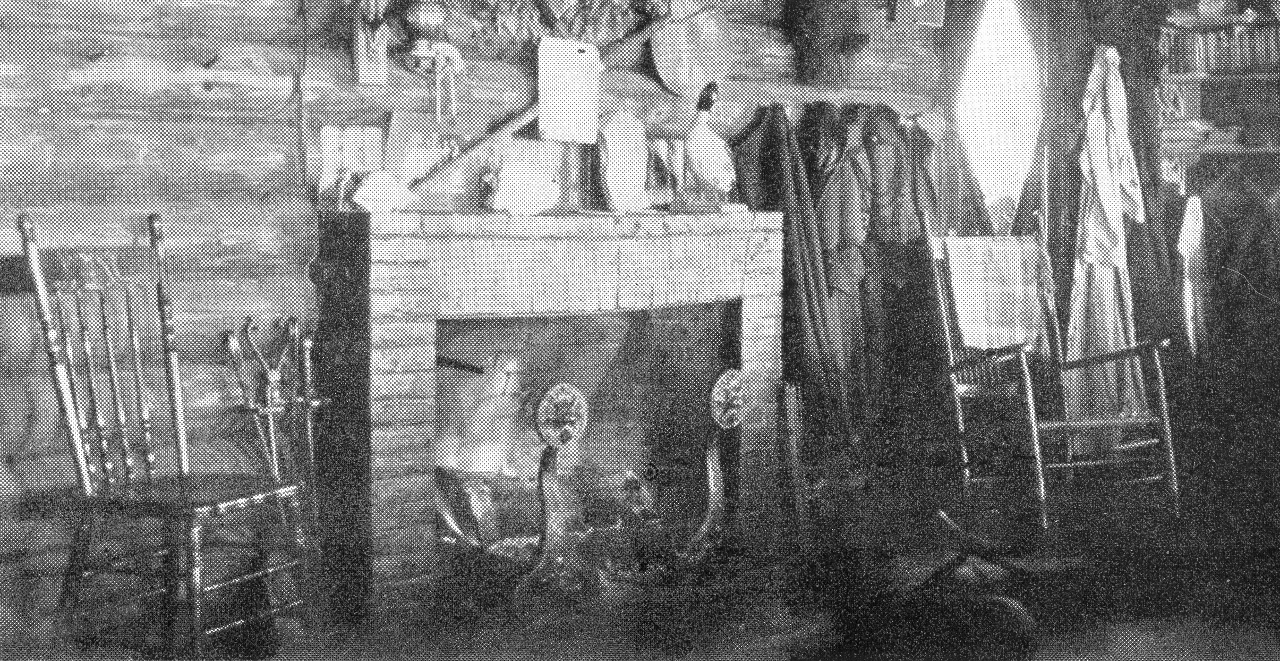
Interior of Antonia Savage Sawyer’s Camp Illahee
*
Dr. Cyrus J. Strong (1862-1934), originally from New York, purchased Camp Illahee by 1920 while he living in Pittsfield. After his marriage to Rose Markins in 1921, they converted the camp into a resort named ‘Great Moose Lake Camps at Stronghold’ where guests from all over the northeast came to vacation. Camp Stronghold offered its guests numerous amenities including fine dining and boating tours around the lake. In July of 1925, it had become such a popular destination that Maine Central Railroad added a scheduled stop on their summer schedule. The good doctor was also known for his many fashionable parties held there with visitors coming up the river in boats or by train dressed in their formal attire.
Rose eventually sold the camp to Clancey Burton and his wife Lela Stedman who resided there with their family year round. It is still known today as Camp Stronghold and remains in the ownership of Burton descendants who recently renovated it.
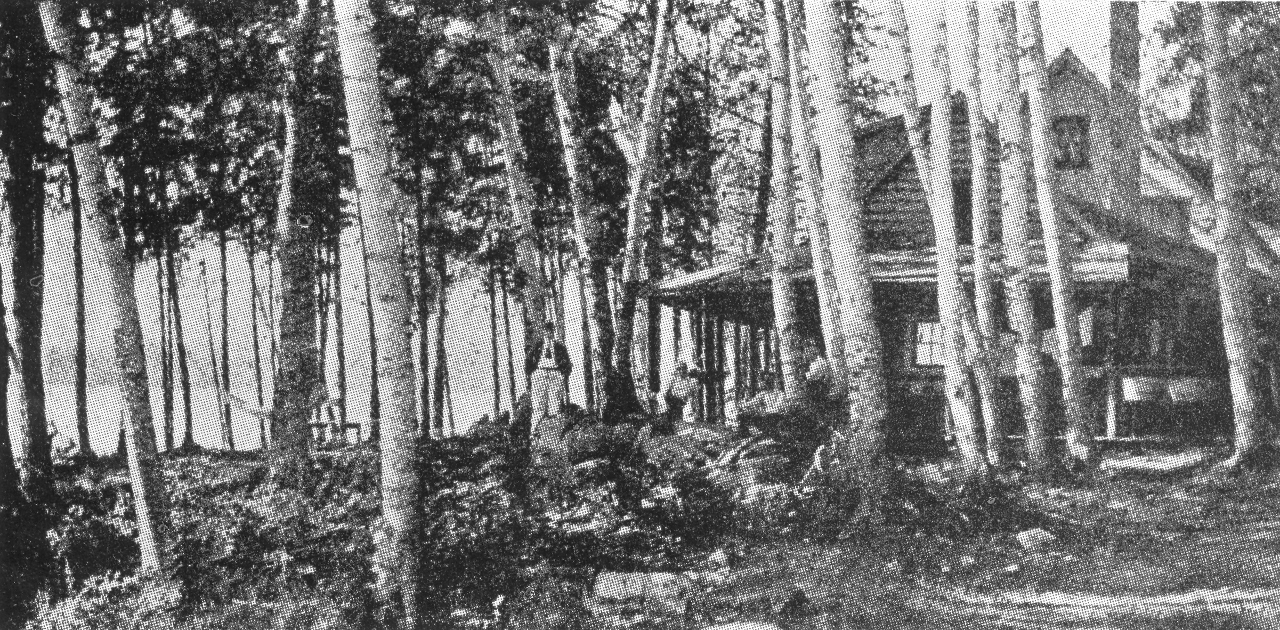
Camp Illahee as Camp Stronghold
*
In 1888, construction began on a second Wild Goose Club lodge located on the southern Hartland shore of Great Moose Lake across from their first lodge on Main Stream. It was opened by 1891 and named in honor of the club’s original Commodore, Henry Hastings.
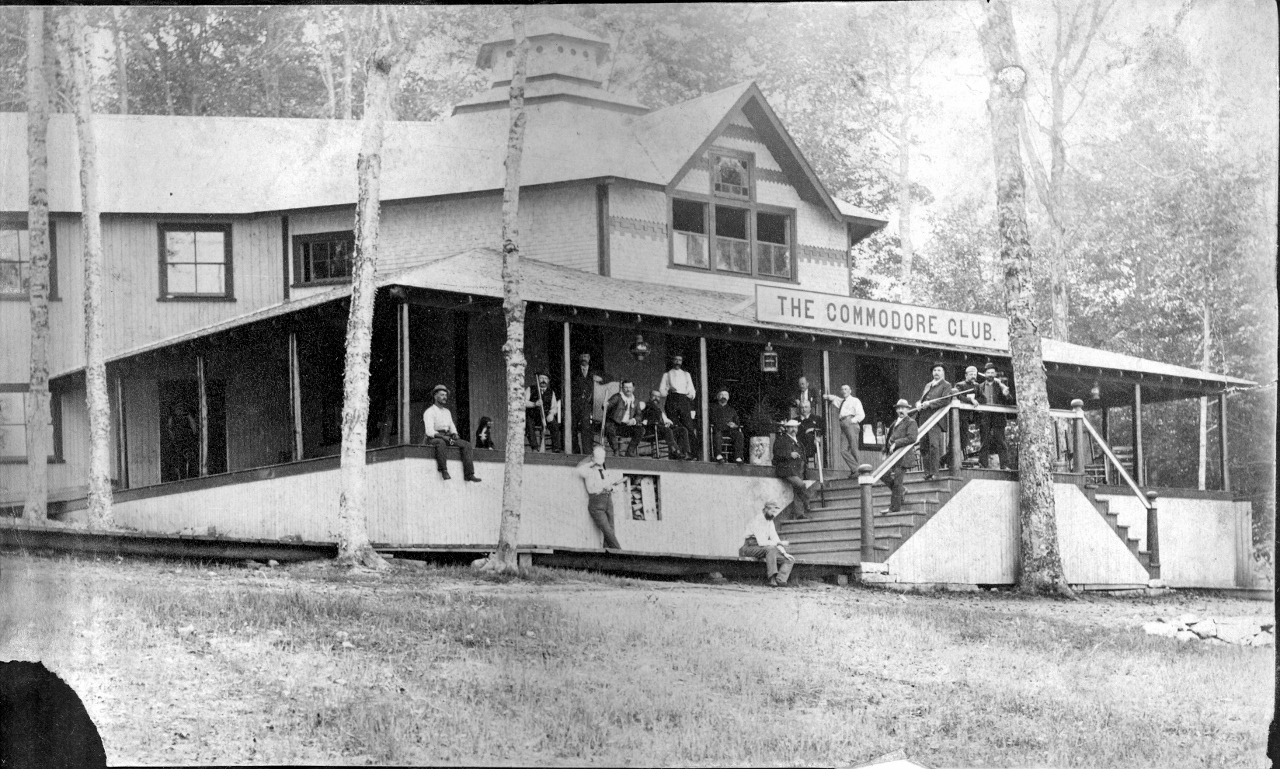
The Wild Goose Club’s Commodore Club Lodge
*
In the early 1890s, Thomas Archibald Linn & George Merrill Lancey built a dual family summer cottage known as ‘Camp DeLancey’ on the St Albans shoreline of Lower Great Moose Lake just above the Sebasticook River outlet. Its name likely honored G. M.’s Great Grandfather Samuel Lancey’s original surname. Samuel was one of the first settlers of Palmyra and patriarch of the Palmyra, Hartland & Pittsfield Lancey Family lines.
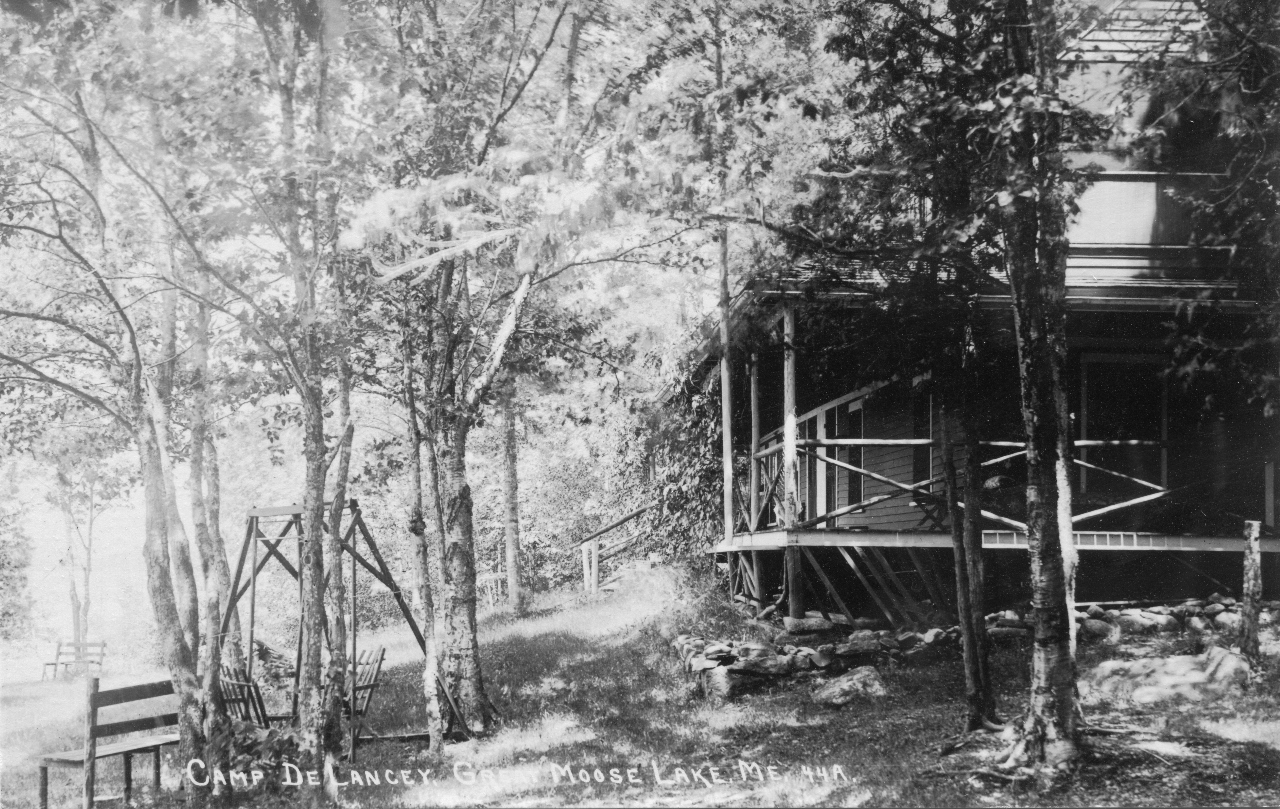
Camp DeLancey on Great Moose Lake
(Photo courtesy of Joan Joy Tibbetts)
*
G. M. Lancey was noted to be fond of fishing and playing Bridge at his Great Moose Lake retreat and had just recently retired from his numerous business & town affairs when he passed away in his sleep at Camp DeLancey on July 9, 1942 at 80 yrs old.
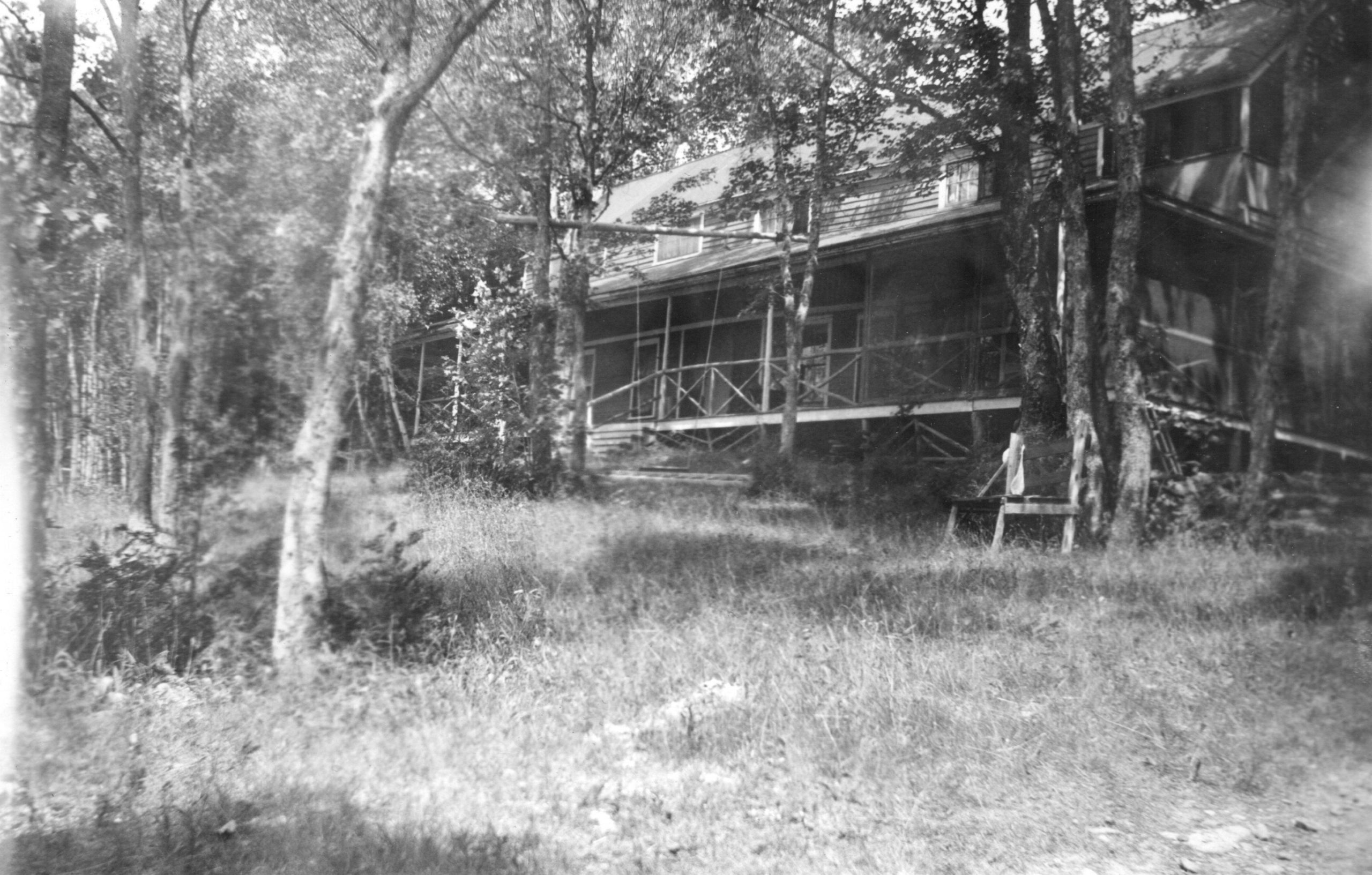
Camp DeLancey on Great Moose Lake
(Photo courtesy of Joan Joy Tibbetts)
*
Following Thomas A. Linn’s death in 1914, one half of Camp DeLancey was purchased by Herbert & Margaret (Murphy) Baird in 1915. Following George M. Lancey’s death in 1942, his daughter Ardis Lancey later sold the remaining half of the camp to Elwood Allen. Elwood then divided the original dual family building into two separate camps. Starting from the large fireplace in the center of camp, he cut away about 5 feet on each side of the fireplace and moved one half of the building further to the right of the original location.
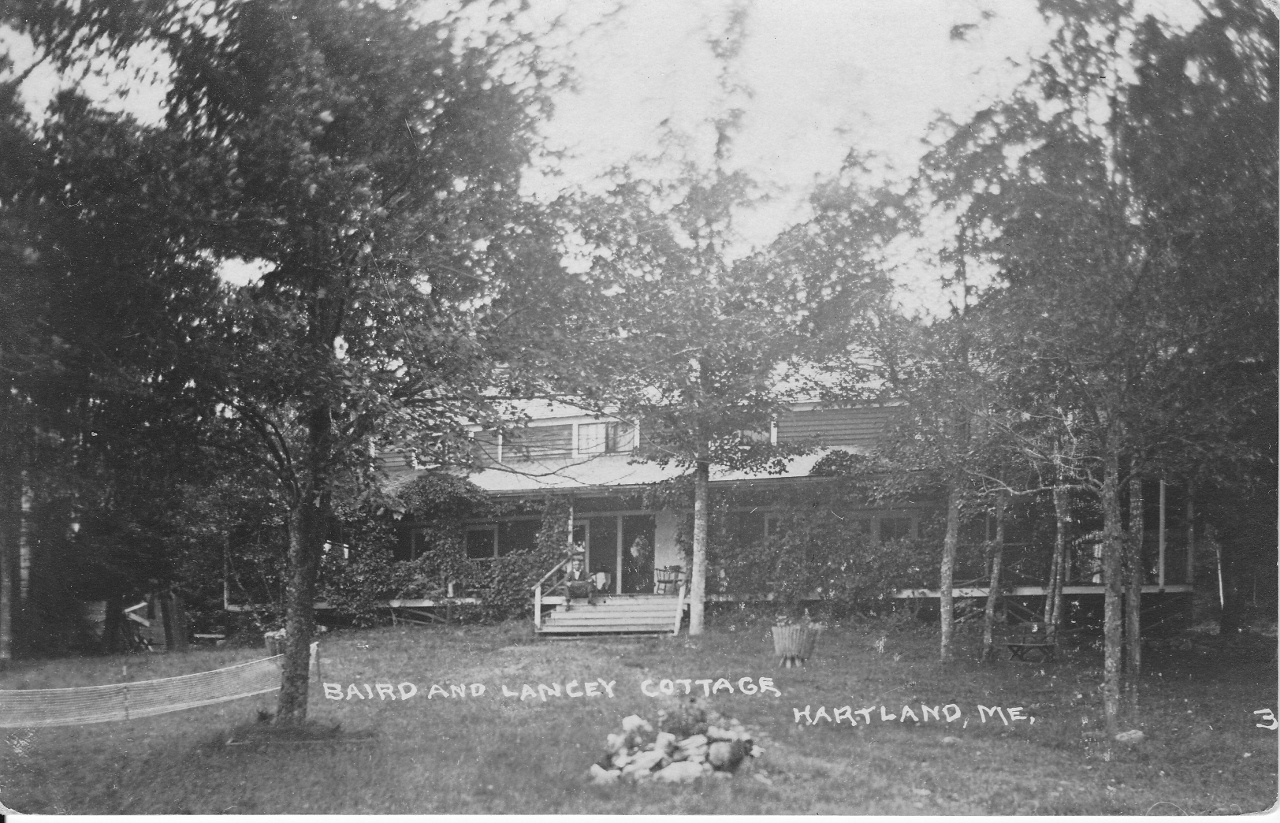
Camp DeLancey on Great Moose Lake
*
Members of the Linn Family enjoying some time at Camp DeLancey around 1936.
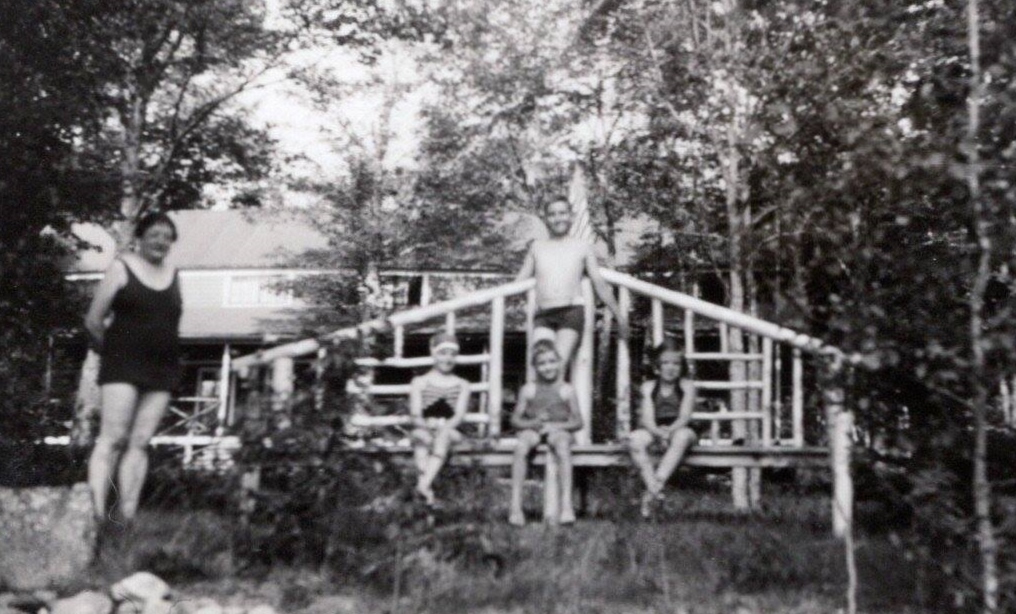
Bertha (Linn) Joy with her children Linn Joy (standing), Ilsa Joy, John Joy & Charlotte Donahue (Bertha’s niece and daughter of Norman & Frances (Linn) Donahue). Bertha is an older sister of George M. Lancey’s wife, Annie (Linn) Lancey.
(Photo courtesy of Joan Joy Tibbetts)
*
Harry & Helen (Baird) Finson, a niece of Herbert, later purchased one of the halves of the original camp. In the 1950s, Helen’s younger brother Webster Baird and his wife Ruth purchased the other half spending summers there with their 2 sons. It is still owned by the Baird Family today.
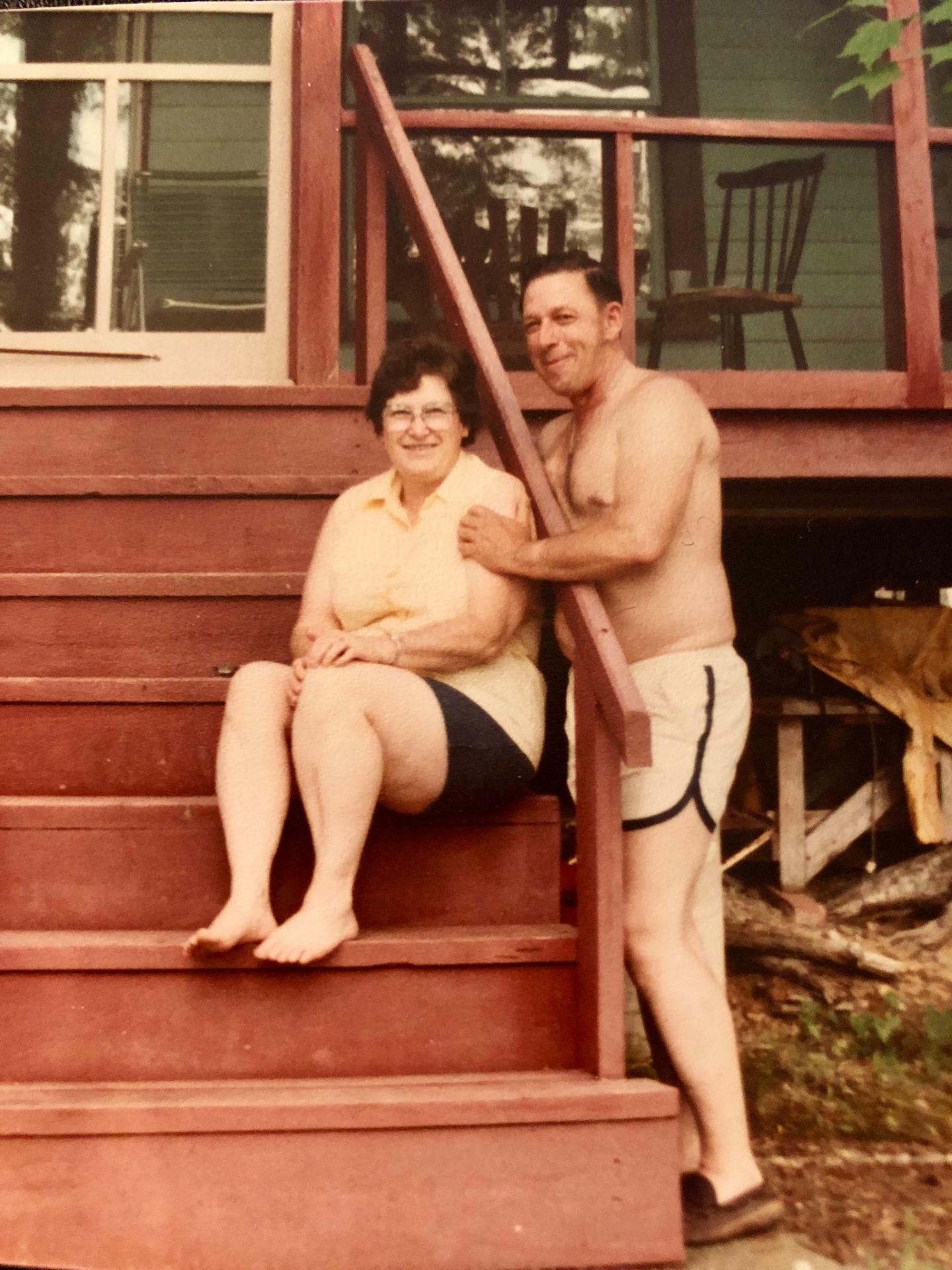
Webster & Ruth (Watson) Baird at Camp on Great Moose Lake
*
The original sign placed at Camp Delancy when it was built was preserved by Webster & Ruth Baird and still hangs in the camp today.
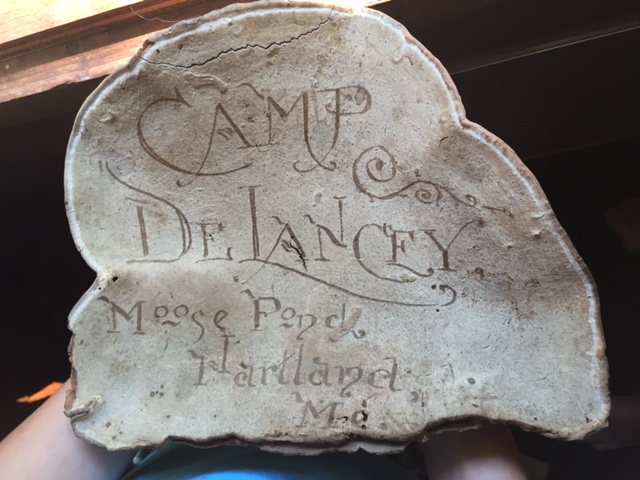
Original Camp DeLancey Sign
(Photo courtesy of the Baird Family)
*
‘Camp Wee Helm’ was built in 1936 next to Camp DeLancey by Edwin J. Joy for his brother-in-law Otho L. Linn and was later owned his older sister, Elizabeth A. Linn; both children of William Linn, Jr & Luella Greene.
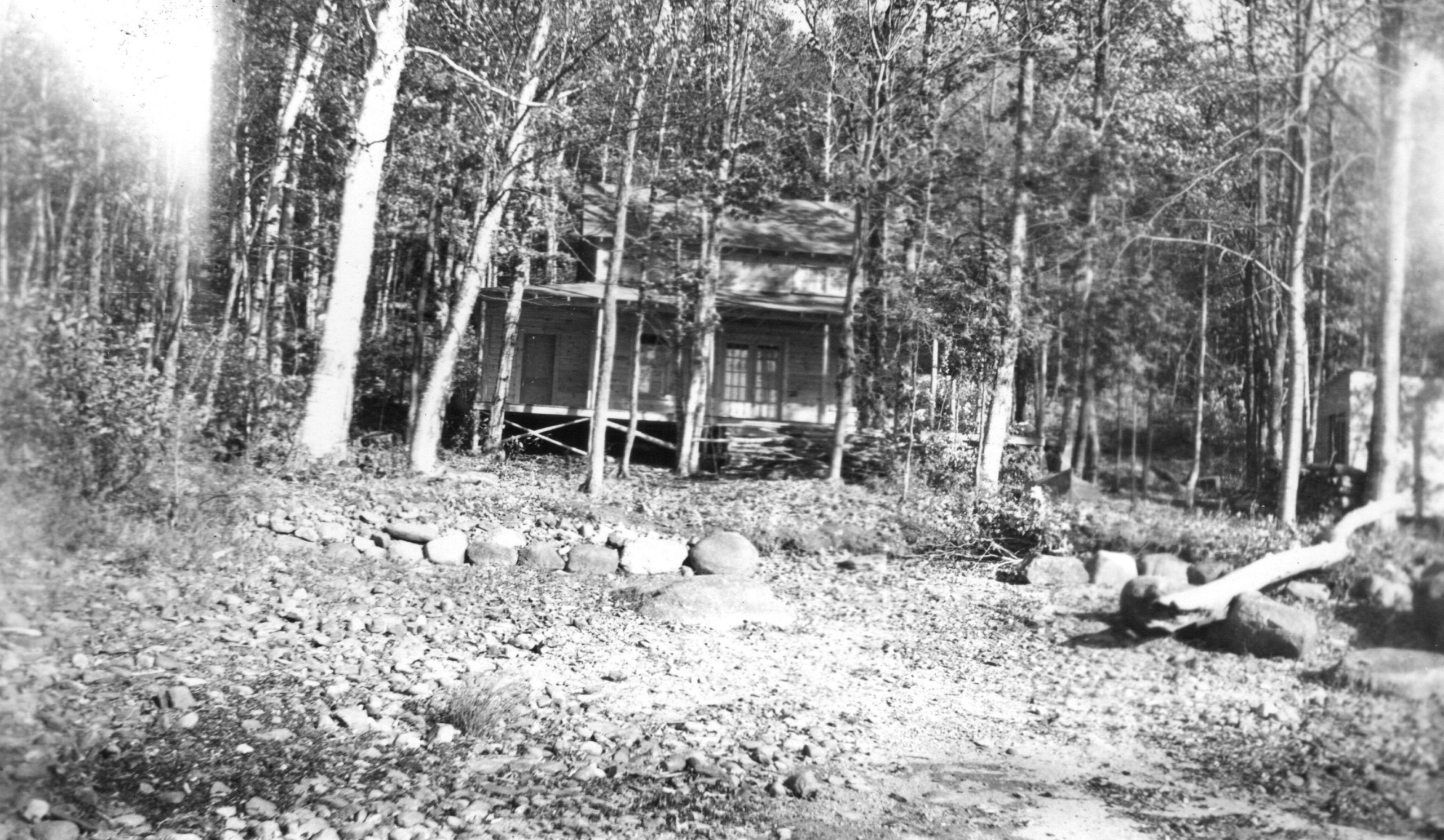
Camp Wee Helm on Great Moose Lake
(Photo courtesy of Joan Joy Tibbetts)
*
Otho & Elizabeth spent many summers at Camp Wee Helm from Memorial Day until Labor Day until his death in 1953.
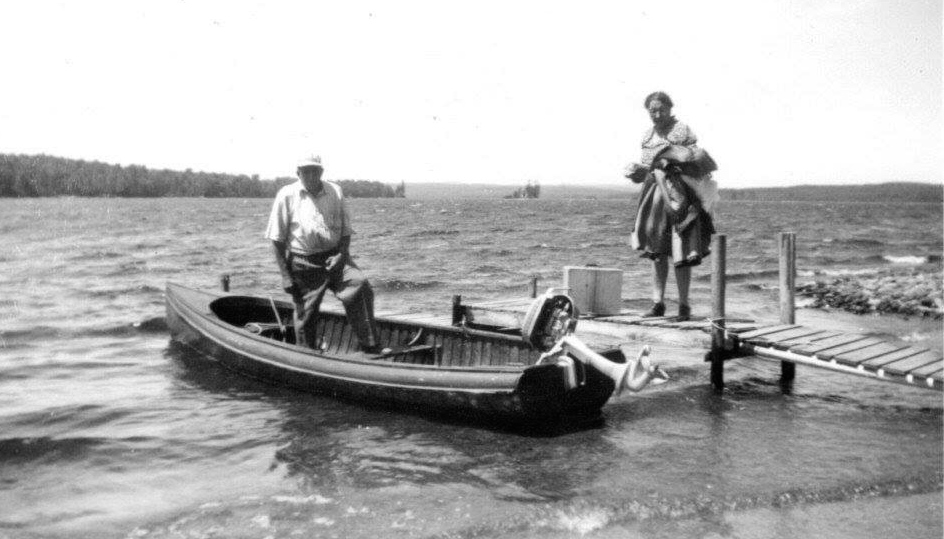
Otho Linn and Elizabeth Linn prepare for a boat ride at Camp Wee Helm
(Photo courtesy of Joan Joy Tibbetts)
*
Elizabeth deeded the camp to her nephew John F. Joy (son of Bertha A. Linn & Edward J. Joy) and it remained in the family until 2012.
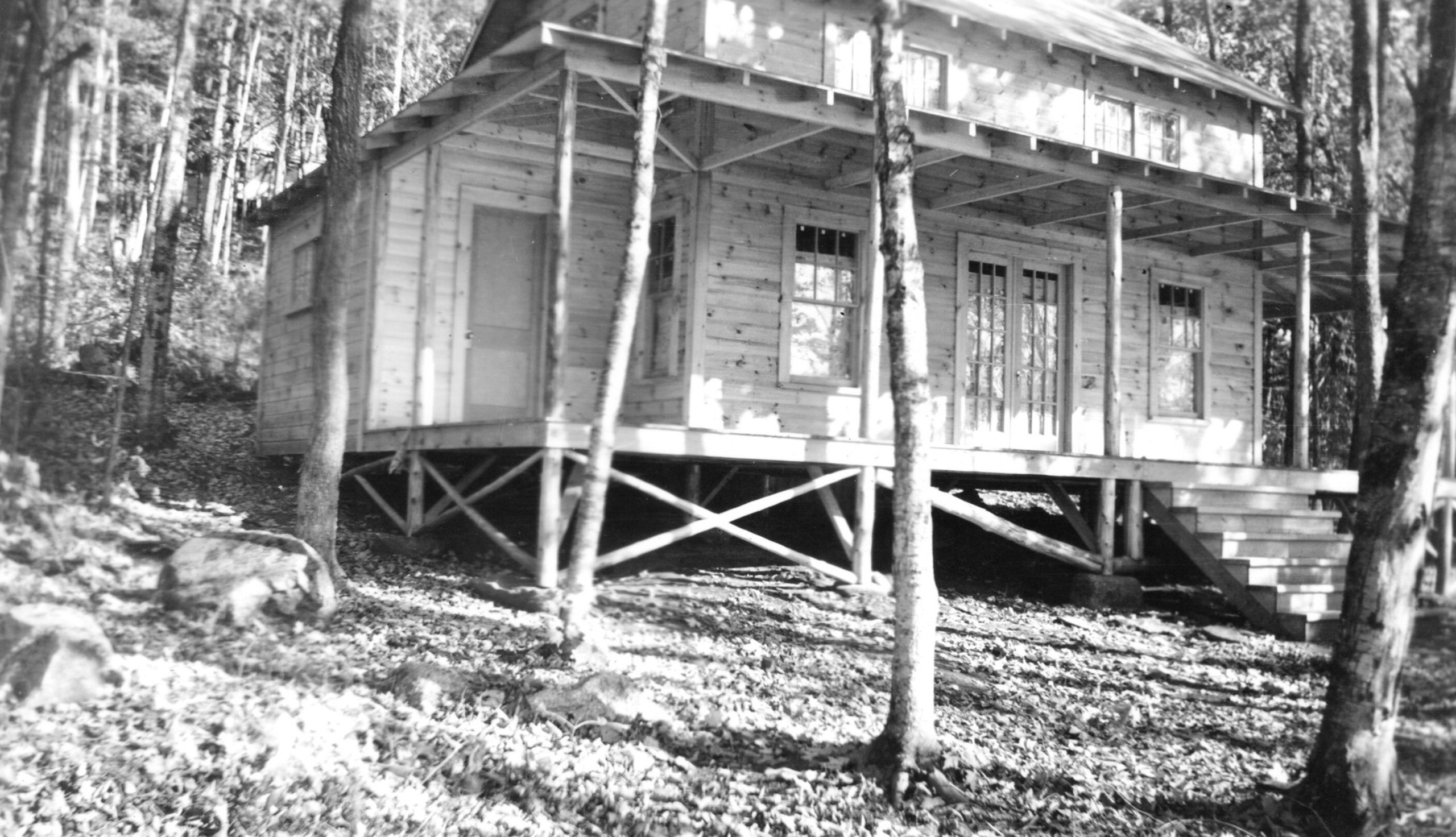
Camp Wee Helm on Great Moose Lake
(Photo courtesy of Joan Joy Tibbetts)
*
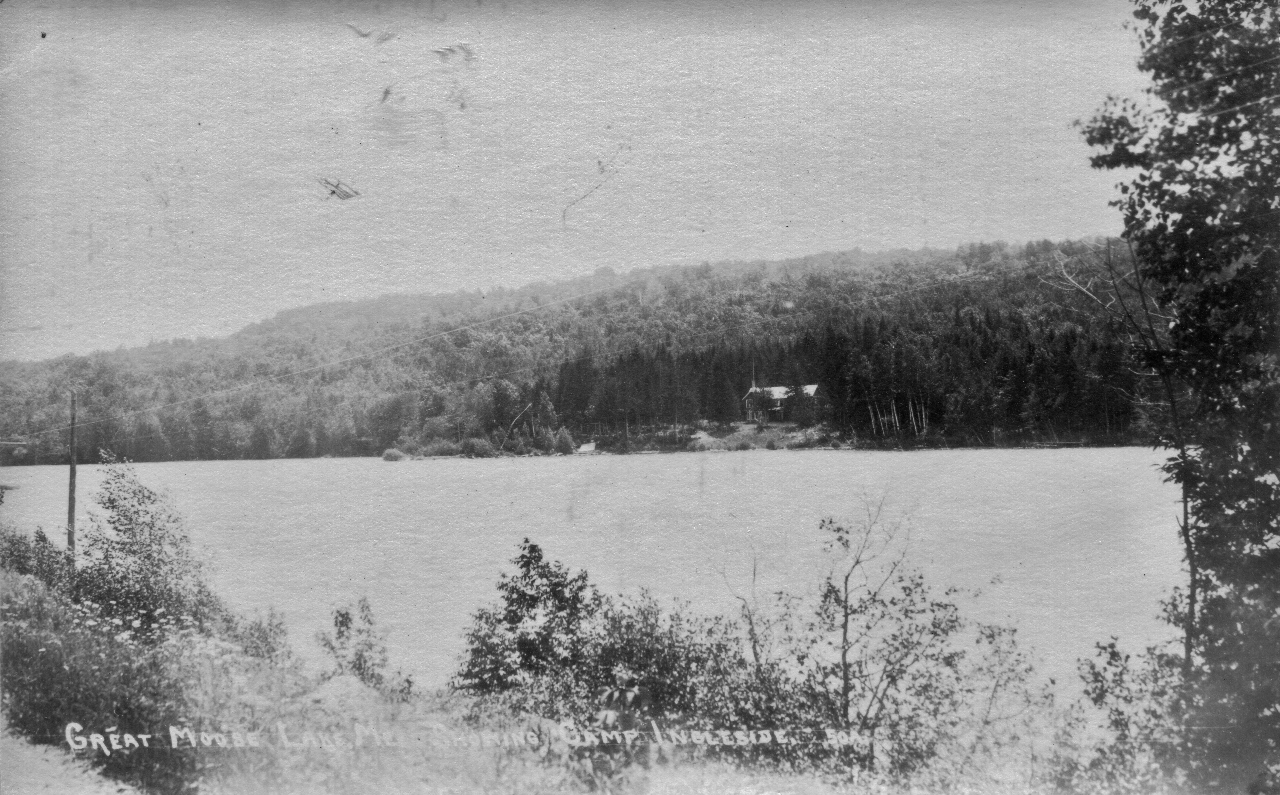
Camp Inbleside on Great Moose Lake
*
Dr. Albert J. Bernard of Skowhegan brought his family to Great Moose Lake soon after 1945 following his service in World War II. Dr. Bernard’s daughter, Louise Nomani, who currently owns the property appropriately named Bernard’s Point, first came to camp atop her father’s shoulders as he picked his way along a wooded path. Her memories of the early camp include the additions of the log cabin front to an older structure, a fireplace, slate hearth and granite wall to take 4 foot logs, a slate sink, and gas fixtures for light.
Louise wrote in a memoir of her early days on the lake, “The camp upstairs was a dark and dreary place with small windows that served only to frame the black pine fingers that waved at us at night. The sound of waves and loons was better than a music box though and mesmerized us until we slept warm with blankets and feather pillows.” (Photos & story compiled from “Around Great Moose Lake” by Brenda Seekins)
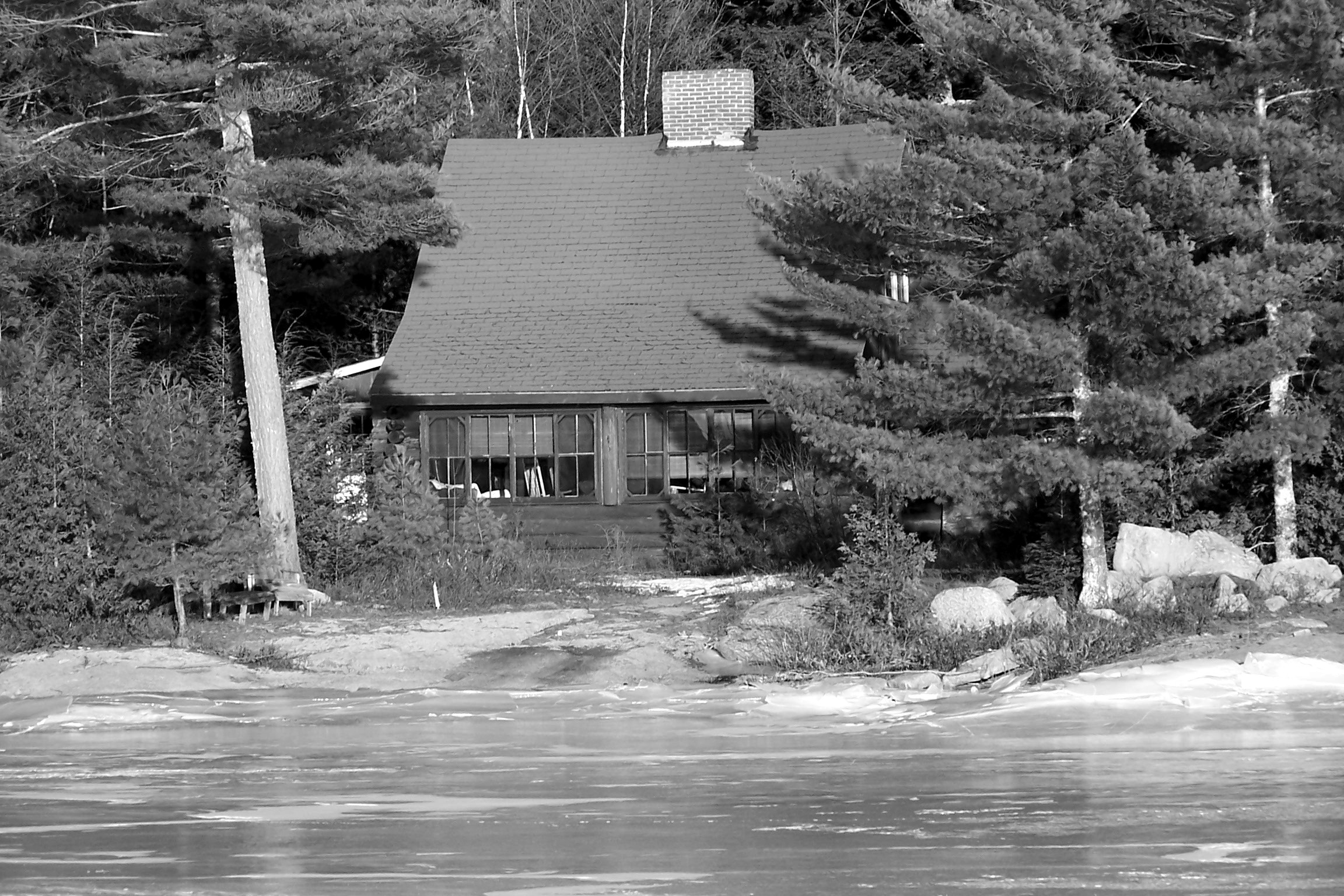
Bernard Camp at Bernard’s Point on Great Moose Lake
*
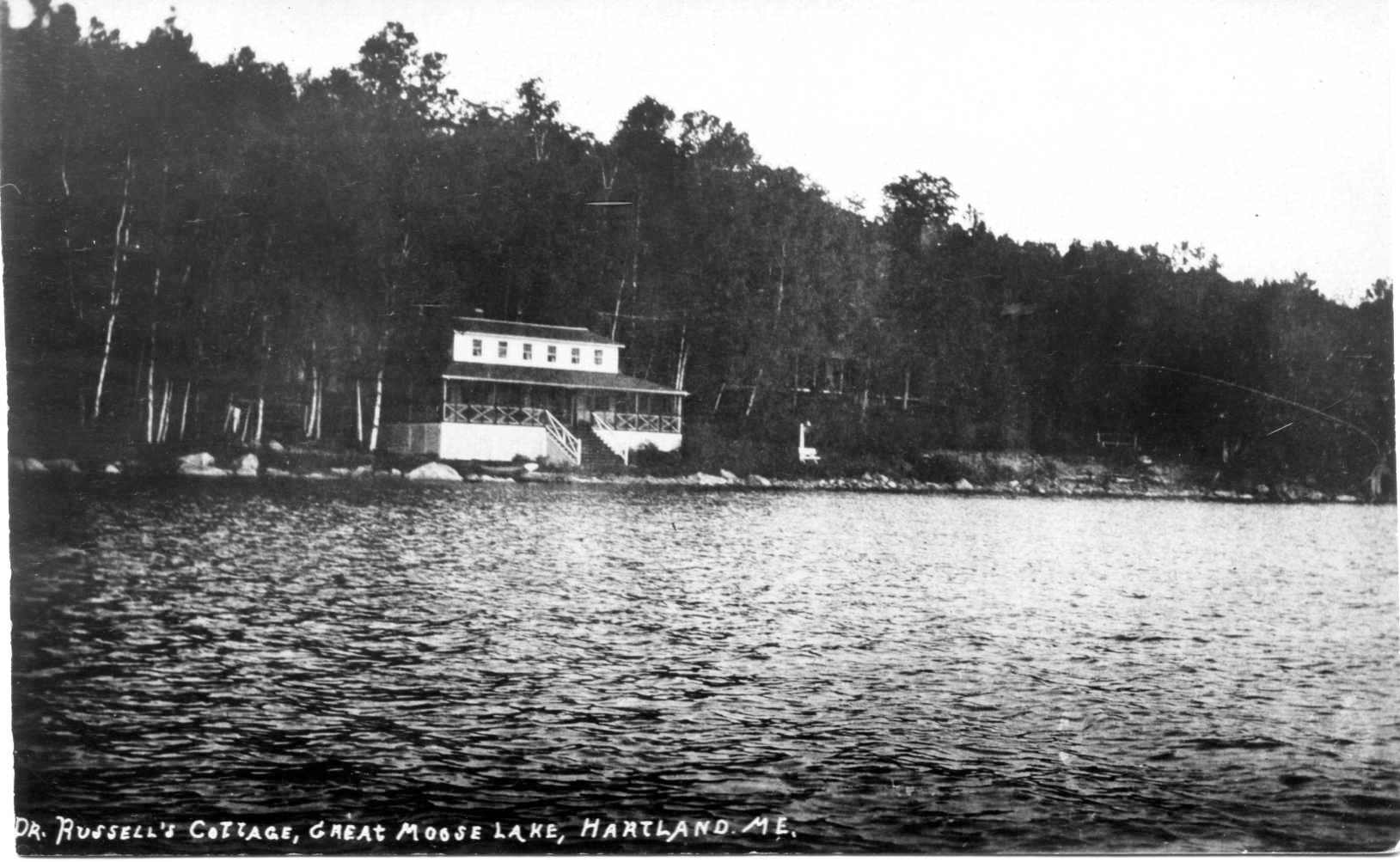
Dr. Russell’s Camp on Great Moose Lake
*
The Russell Camp was completely lost to fire on July 4, 1946.
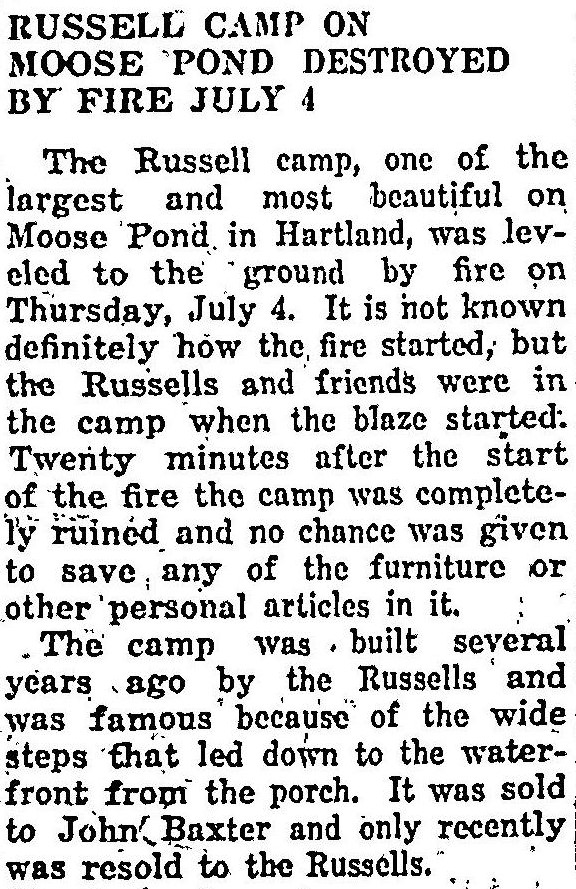
Pittsfield Advertiser – July 11, 1946
*
In the early 1900s, it was a common sight to see members & guests of the Wild Goose Club shuttling back and forth between Castle Harmony and The Commodore Club in their private launches.
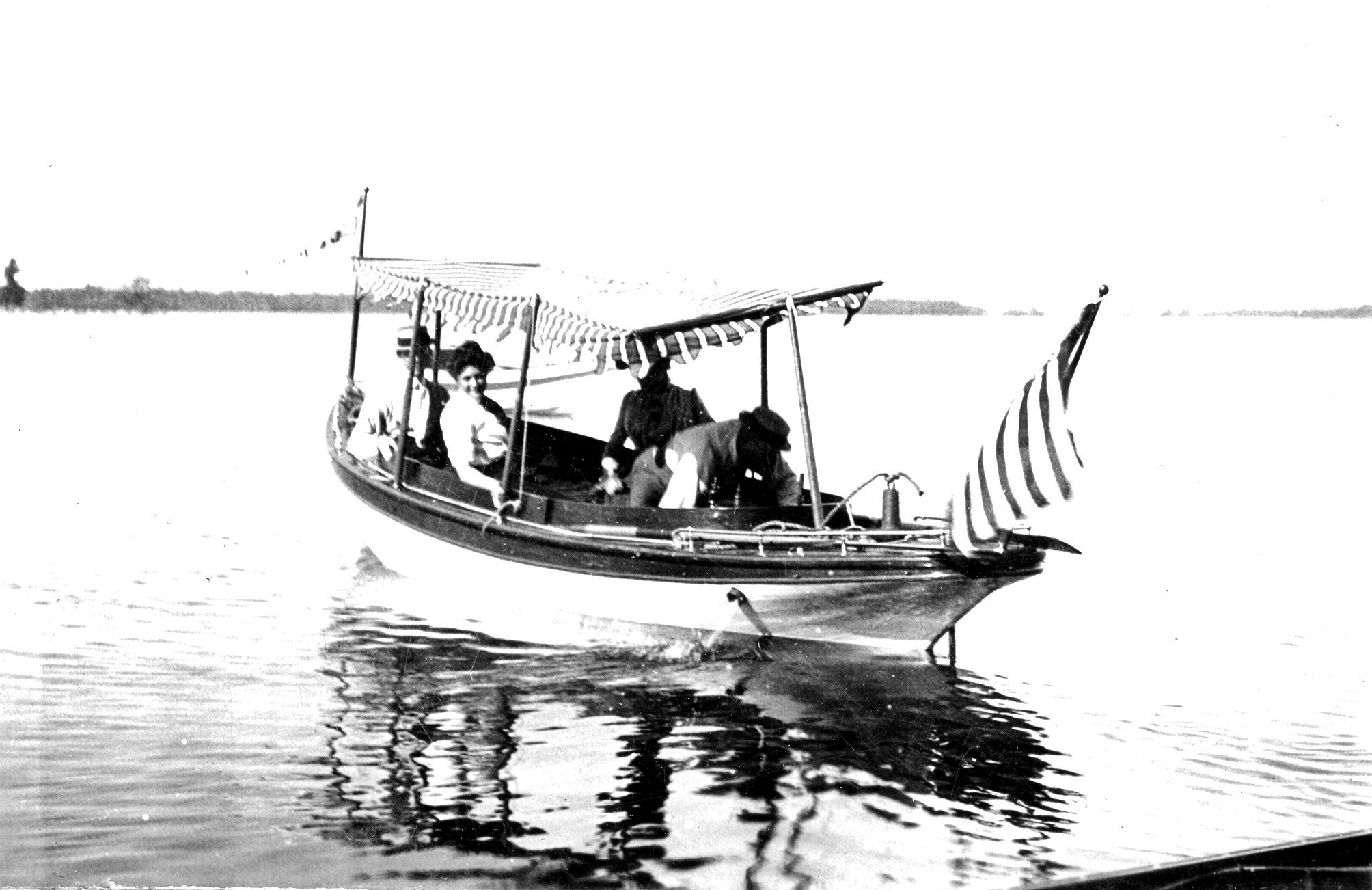
Wild Goose Club Members & Guests shuttle across Great Moose Lake aboard a private club launch
*
In the early 1900s, the Free Baptists utilized the crystal clear waters of Great Moose Lake to perform Baptisms.
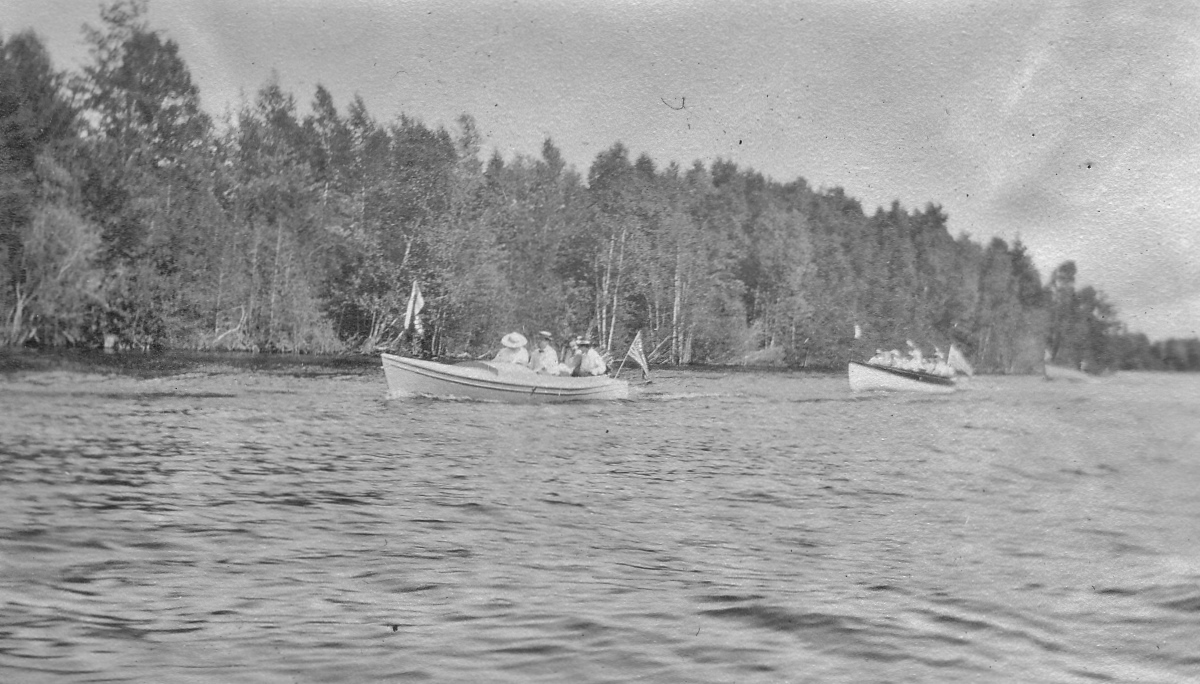
Free Baptists head up the Sebasticook River to Great Moose Lake for a Baptism Ceremony – 1910
*
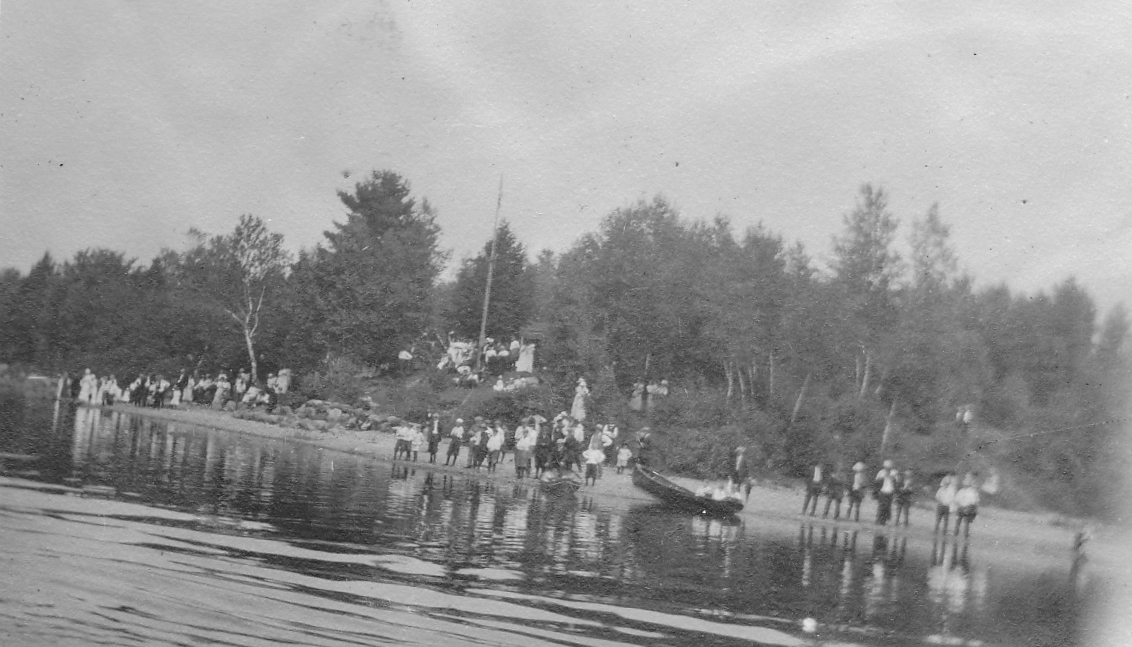
Free Baptists arrive on the shore of Great Moose Lake for a Baptism Ceremony – 1910
*
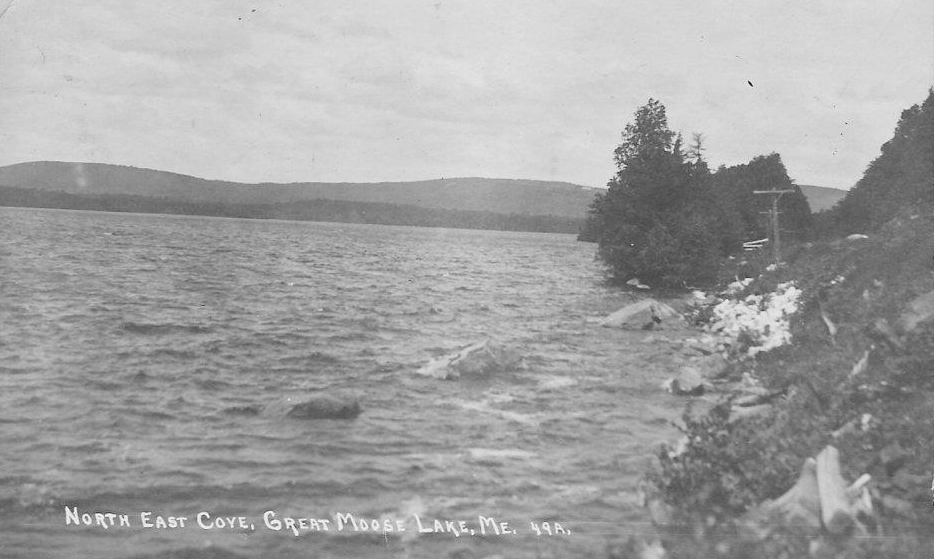
North East Cove on Great Moose Lake
*
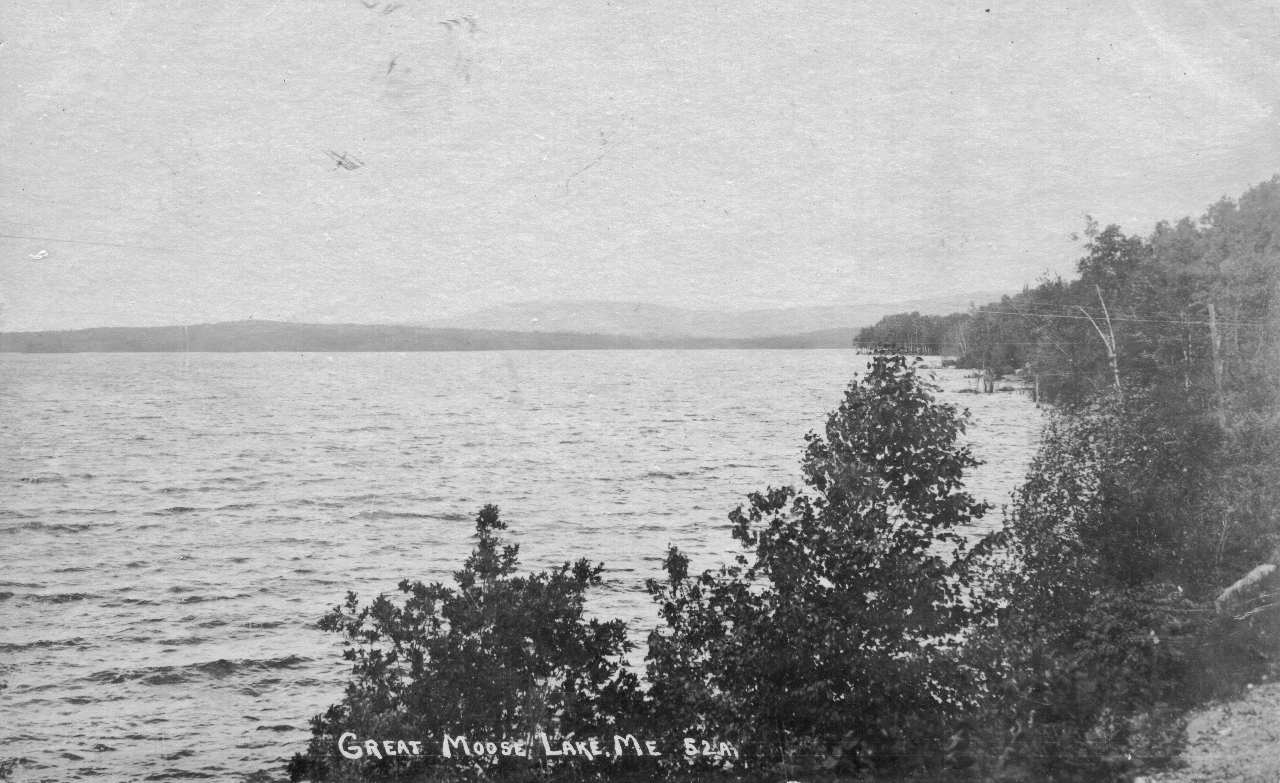
Unknown Cove on Great Moose Lake
*
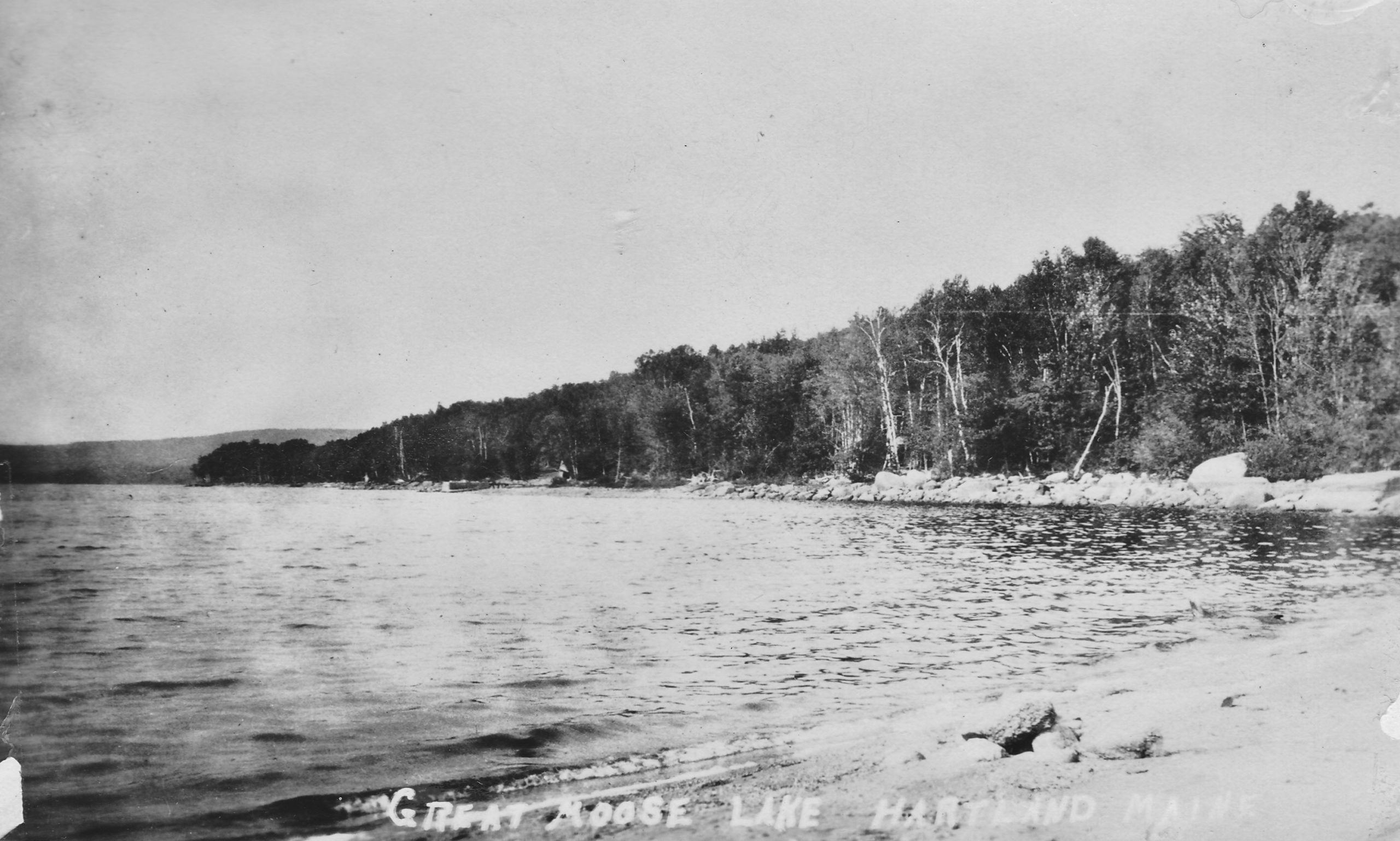
Unknown Cove on Great Moose Lake
*
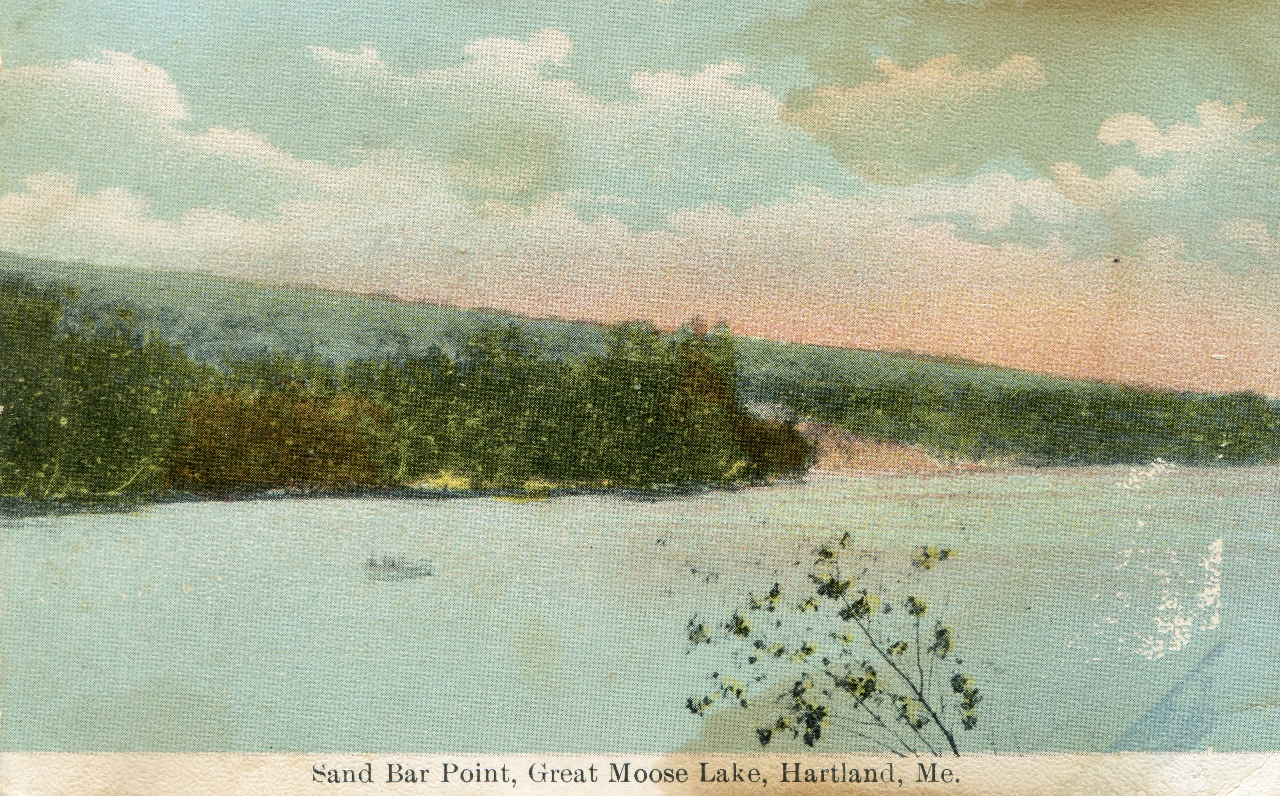
Sand Bar Point on Great Moose Lake
*
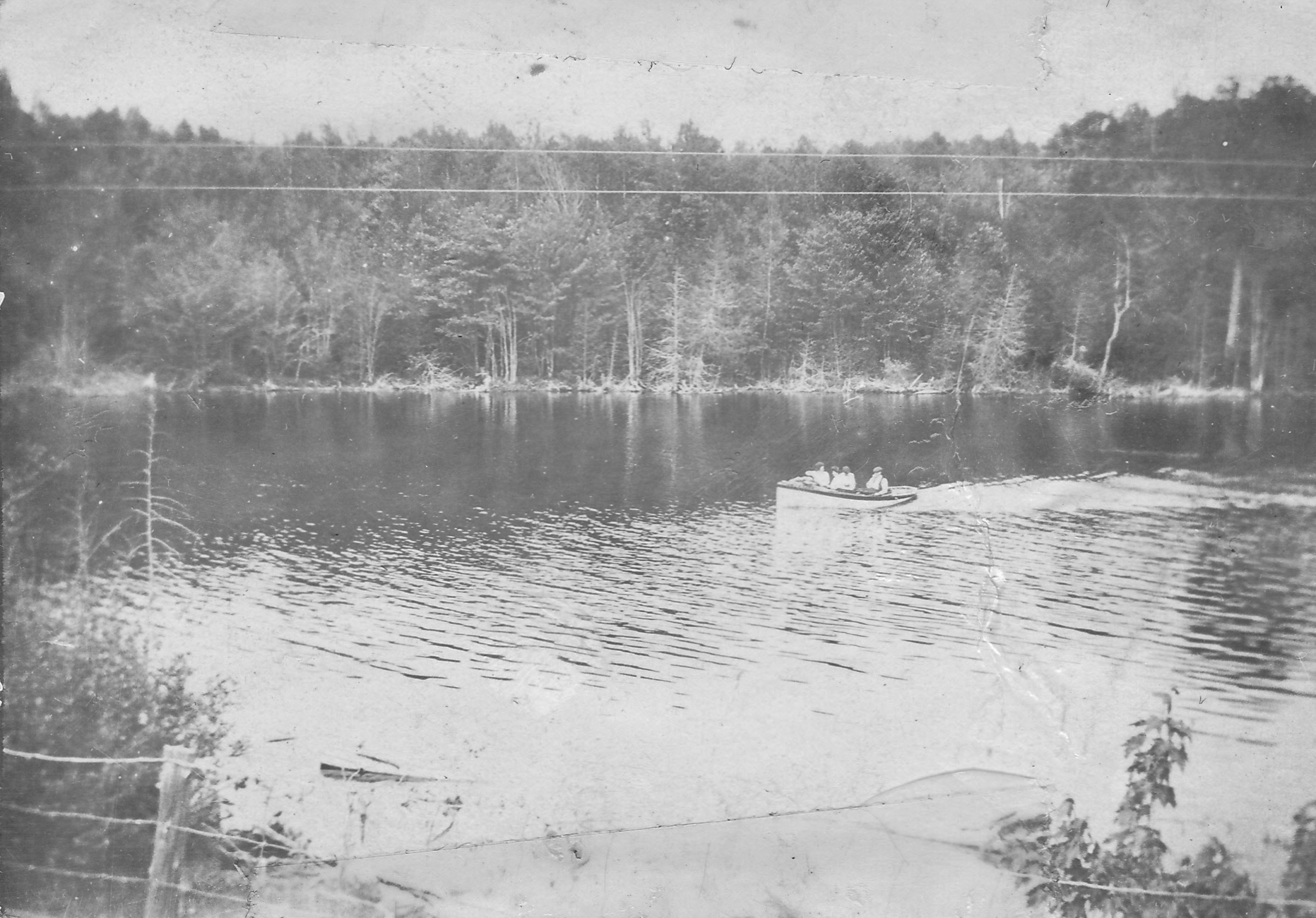
A casual summer boat ride up the Sebasticook River into Great Moose Lake
*
In the 1940s, Ervin W. Martin constructed a road on his property just past the railroad crossing on Outer Pleasant Street following along the railroad tracks to the Sebasticook River Trestle. The photos were captioned by his son Selden Martin II.
“The sign reads Temporary Railroad Crossing – Stop Look & Listen. Dad’s truck is to the left with Sam Damon standing next to his car. Dad and Dugas are spraying water on the fire. We will take some pictures of the gravel pit. It’s a honey!”
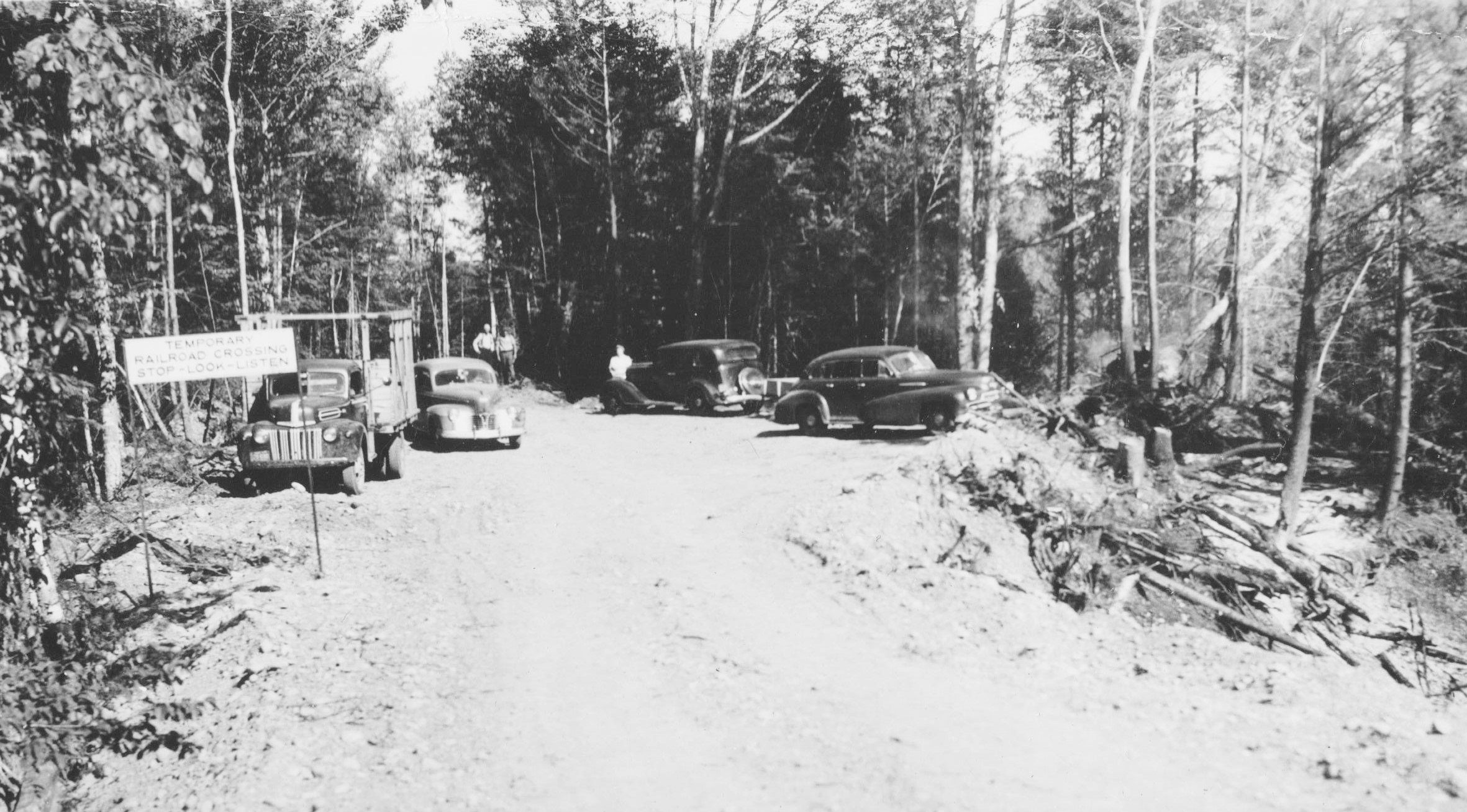
E. W. Martin Road Construction
(Photo courtesy of Maynard Ross)
*
“Dugas on the left. He had been burning some brush before you get to the tracks. Dad was spraying water to put the fire out. The picture was taken coming down from the tracks to the village a little further down than the other picture.”
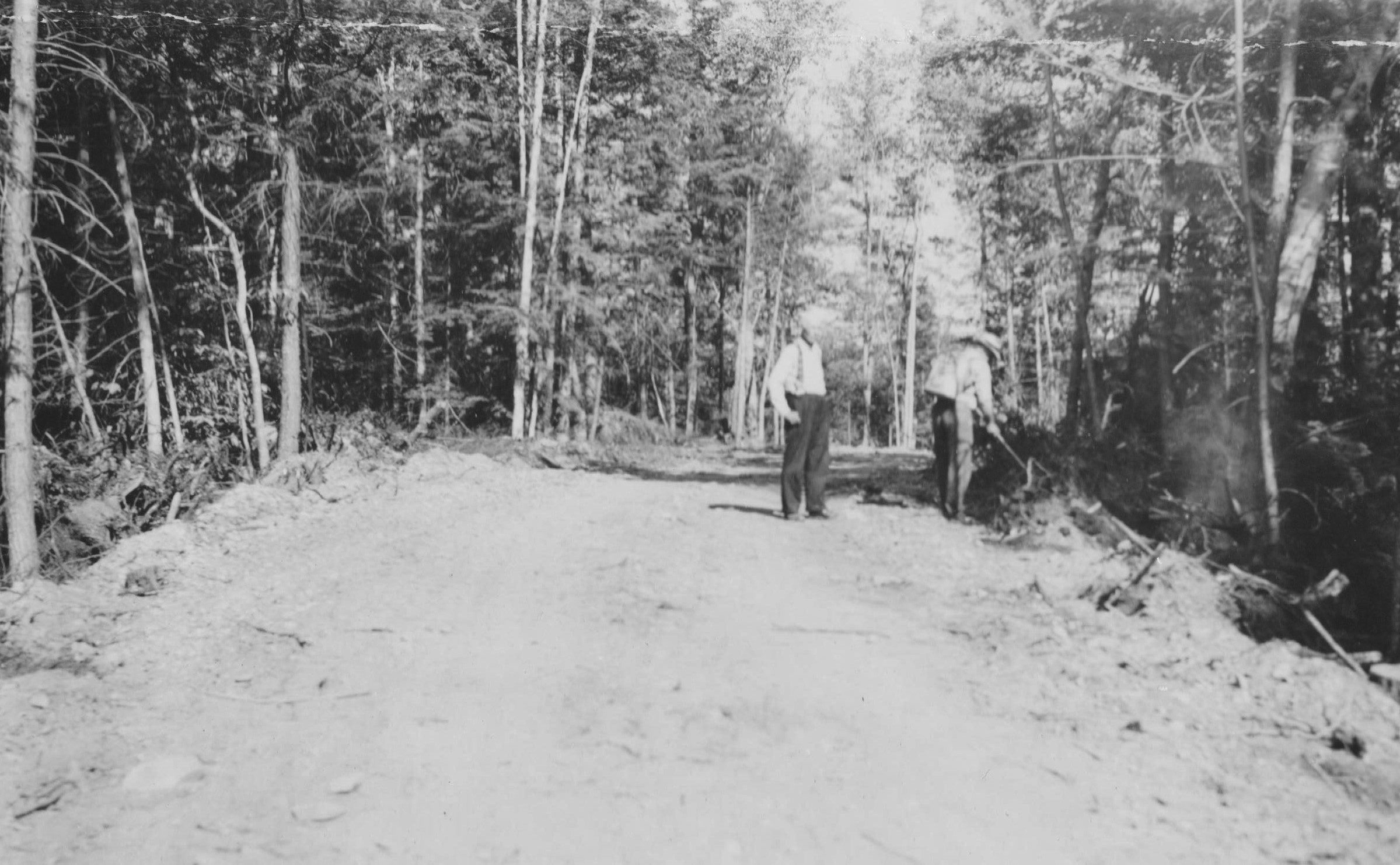
E. W. Martin Road Construction
(Photo courtesy of Maynard Ross)
*
In 1955, Bill & Lorna Trauth purchased the Castle Harmony Compound and opened the Wild Goose Camp for Boys. The camp would remain a regular fixture on Great Moose Lake attended by hundreds of young men from all over the country until it closed in 1995.
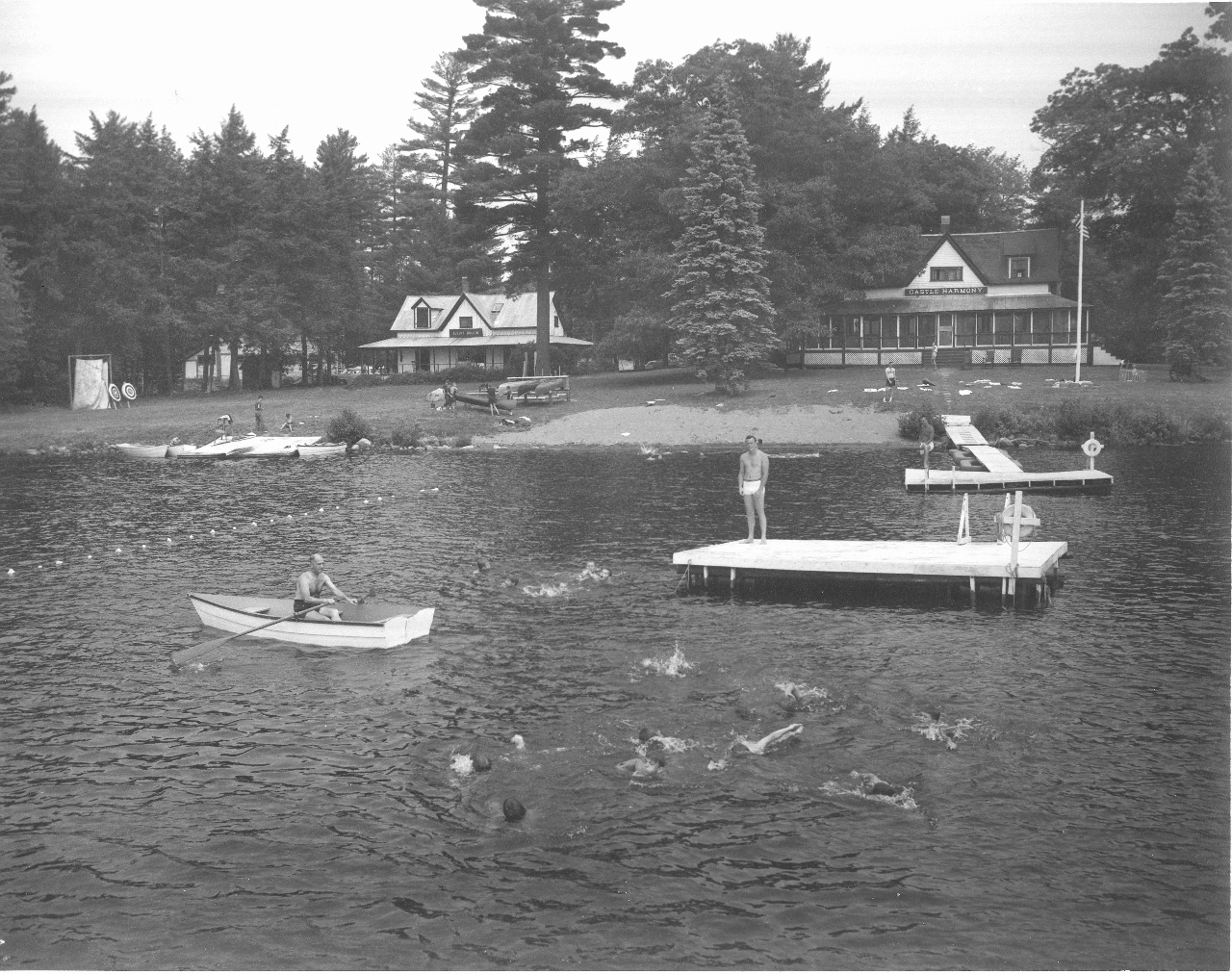
Wild Goose Camp for Boys at the former Wild Goose Club Castle Harmony Compound
*
Great Moose Lake Association (GMLA) is a non-profit community organization of homeowners, families, friends, business members and community organizations with a mission to preserve, protect and enhance Great Moose Lake for current and future generations. Their focus is on monitoring water quality, educating neighbors and visitors on how to maintain water quality and enjoy the lake. GMLA holds numerous events and fund raisers in support of their cause and continue their efforts to protect the lake today.
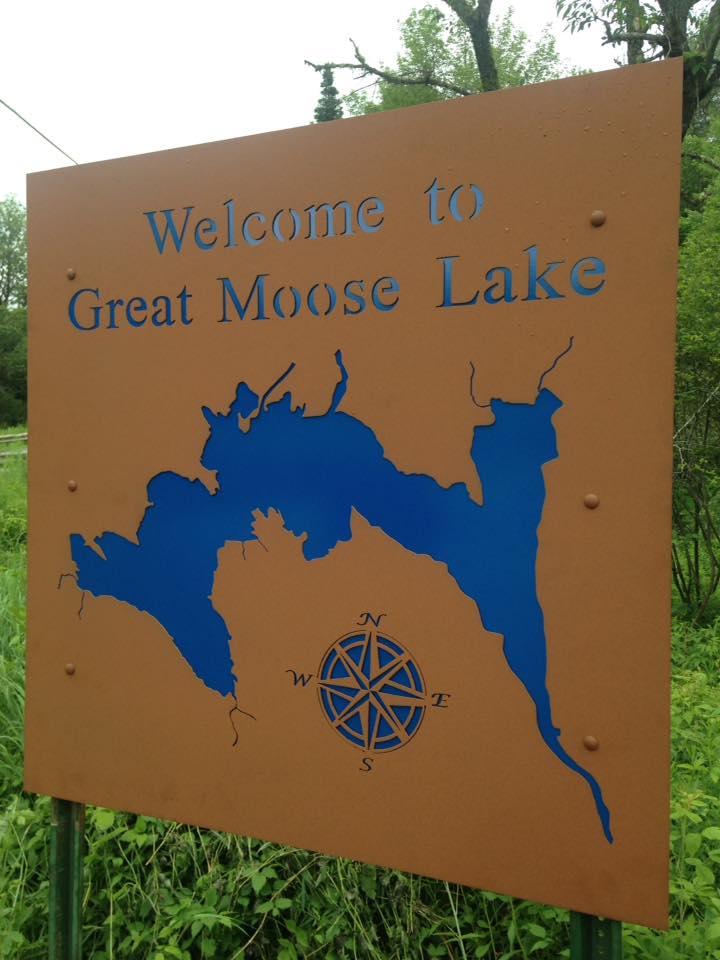
One of several new welcome signs recently erected by the Great Moose Lake Association
*
Devil’s Head Mountain is located just north of Main Stream on the Harmony side of Great Moose Lake. It’s namesake derived from a massive boulder which sits atop it left by glaciers thousands of years ago. The boulder, with its unique precarious perch, became a famous local landmark known as Devil’s Head.
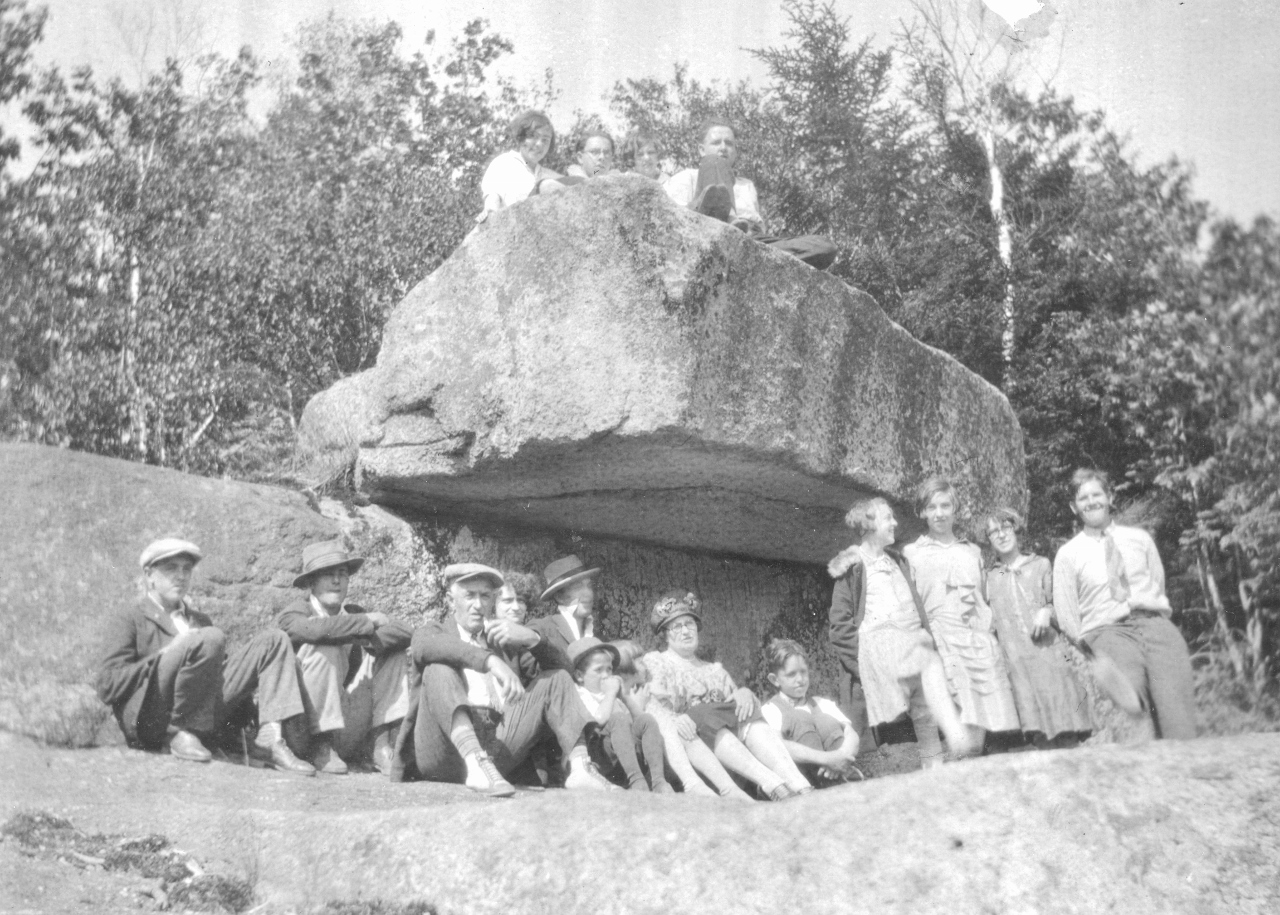
Members of the Seekins Family of St Albans pose for a photo at Devil’s Head in 1920
(Courtesy of Brenda Seekins)
*
Granite had previously been taken from St Albans Mountain for a number of years but the first known mention of procuring granite from Devil’s Head Mountain was included in an 1886 article concerning the opening of the new Sebasticook & Moosehead Railroad into Hartland Village. A stock company, later named as the Sebasticook Granite Company, was formed to purchase the mountain consisting of James O. Bradbury, Greenville J. Shaw, D. H. Bartlett, Archibald Linn and Calvin Blake, Jr. Capitol Stock for the company was $100,000 with shares sold at $100 each with plans to begin operations in the summer of 1887.
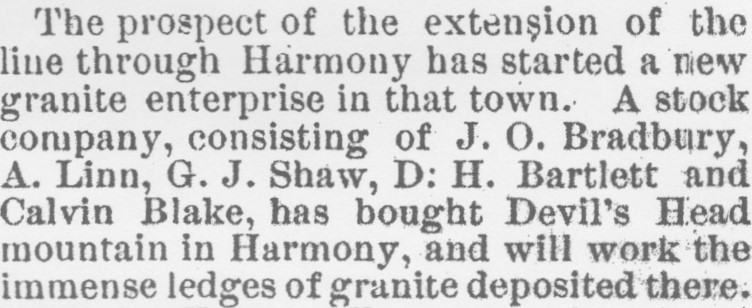
Lewiston Journal – November 4, 1886
*
Following the opening of the Devil’s Head Mountain Quarry, thousands of tons of granite blocks were carved from the mountain side. Many of these massive granite blocks, and eventually those from Cyr’s Quarry, were later used to build foundations for local landmarks such as the Hartland Opera House and the Sebasticook & Moosehead Railroad Trestle as well as some of the bridges and house foundations throughout Hartland.

Large granite blocks from Devil’s Head were used to build the Sebasticook River Railroad Trestle
*
Devil’s Head has been a popular destination for many, many decades for adventurous locals and visitors.
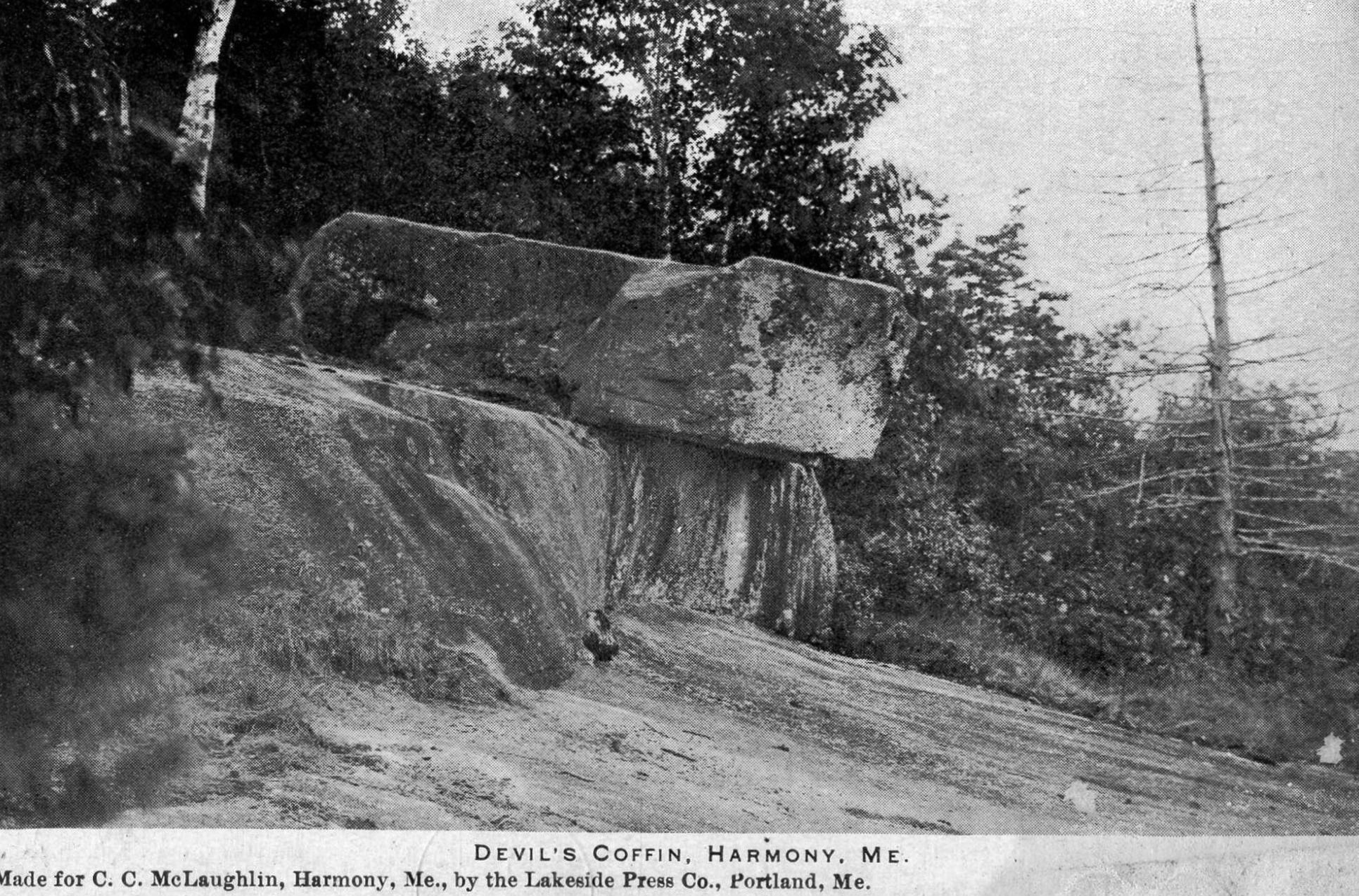
Devil’s Head referred to here as Devil’s Coffin
*
The roads to the former granite quarry initially allowed reasonable accessibility by horse and wagon from either the Harmony or St Albans side, but the long abandoned roads now require snowmobiles, all-terrain vehicles or a hearty hike to reach the area.
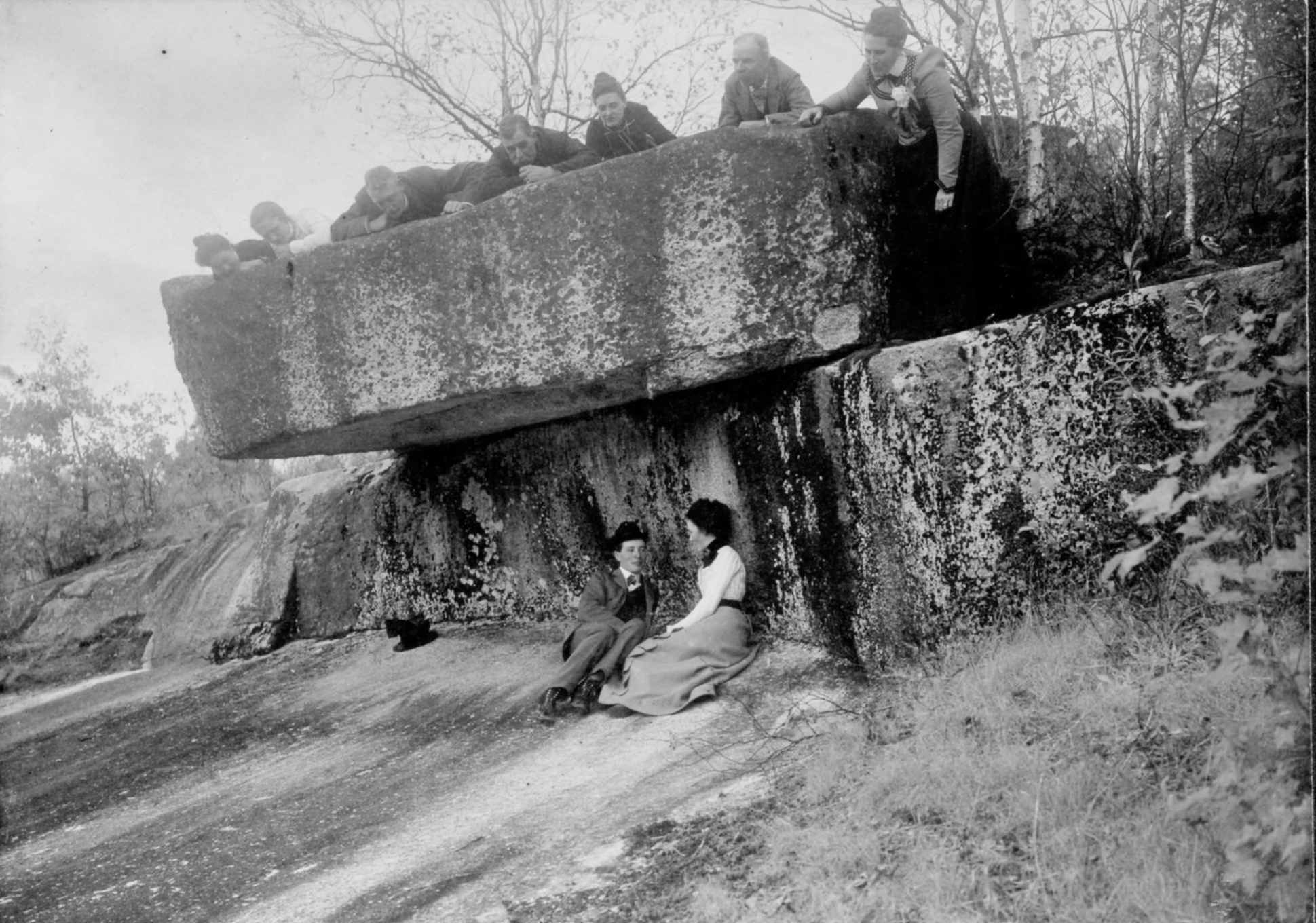
A not so private couple’s moment captured at Devil’s Head
*
While the distinct natural outcropping of the Devil’s Head boulder is a spectacular sight to behold, its location also offers a magnificent vista of Great Moose Lake which features a beautiful view of most of the entire length of the lake from its prominent perch.
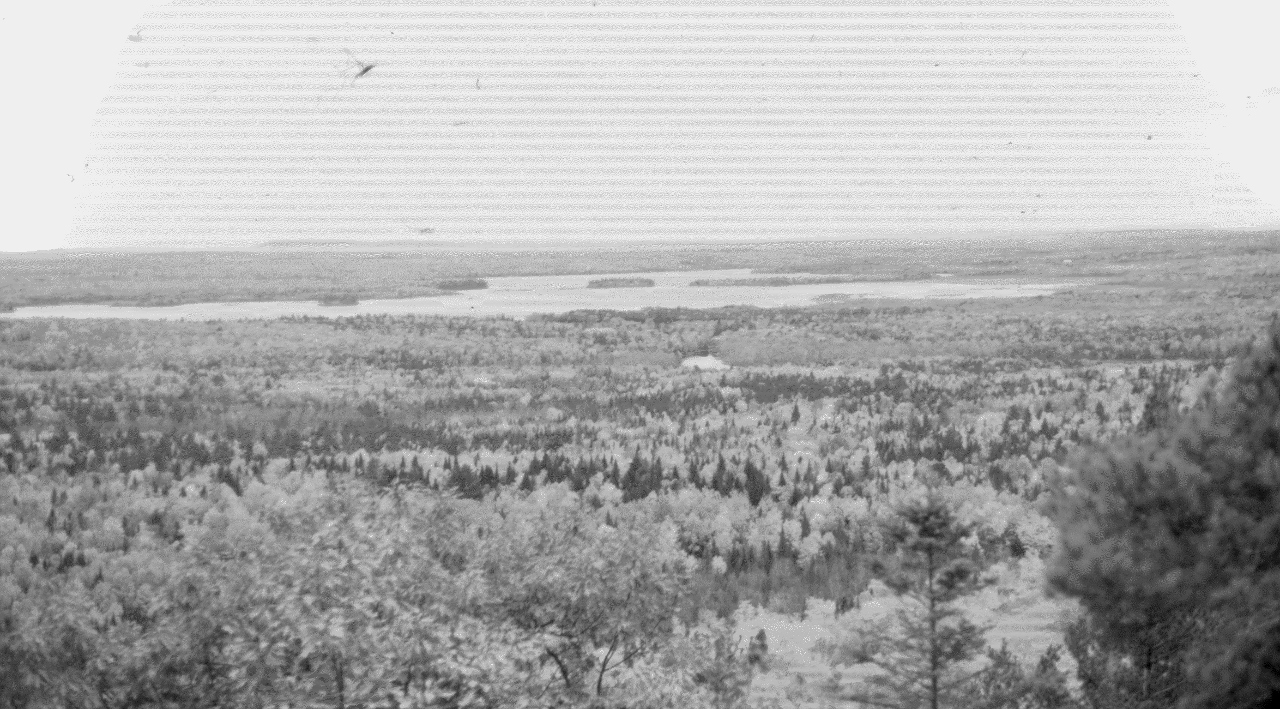
View from Devil’s Head Mountain
*
Cyr’s Quarry opened in 1902 providing an additional source of local granite for the railroad and other local structures. A dedicated side rail would soon be built to enable the massive blocks brought down from the quarry to be loaded and transported by rail to their destinations.
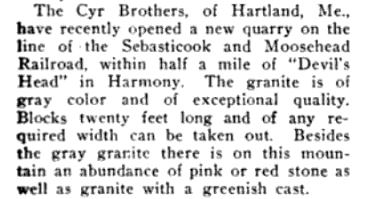
Stone Magazine Article – 1902
*
2 of the major natural annual events at Great Moose Lake which signaled Spring had arrived were Ice Out followed soon after by the Smelt Run. Tracking the ‘official’ Ice Out Date from 1944 to 1959 were Maebelle (Seekins) Nichols followed by Myrtle (Lovely) Marble through 2010.
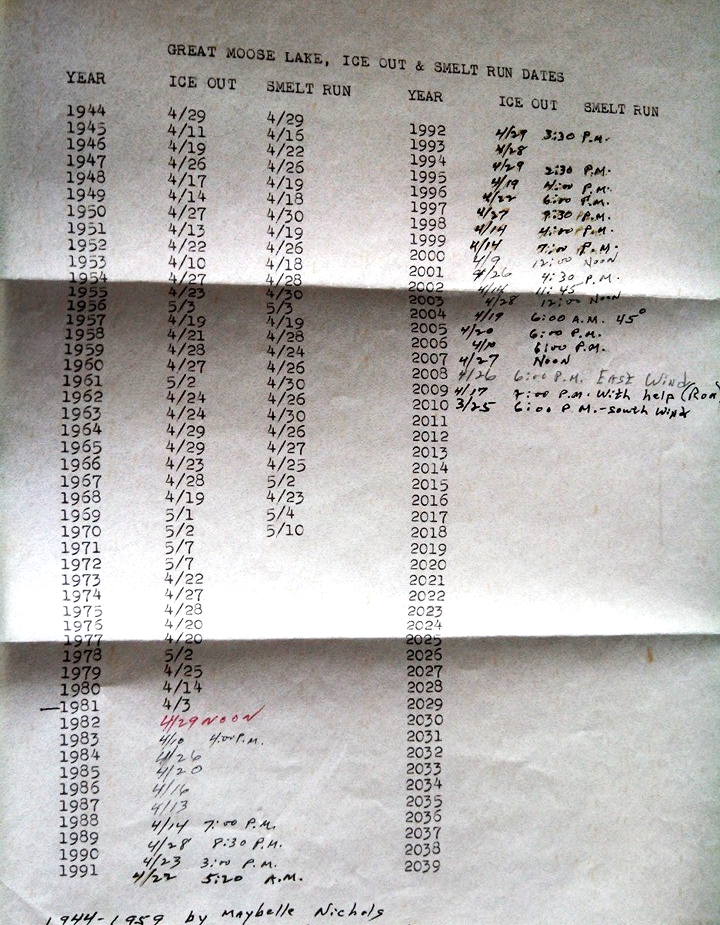
Great Moose Lake Ice Out & Smelt Run Chart
(Courtesy of Helen Nutter Snowman)
*
Main Stream was a particularly popular hot spot for netting or dipping smelts during their spring run for many years until it was shut down to protect the declining numbers of the species. It was not unusual to see dozens and dozens of people arrive each night during their annual run with their boats, canoes, waders and buckets trying to take their limit of the small and tasty fish. During some seasons, locals were known to have set up impromptu food & drink stands to raise funds for various causes, if not personal gain.
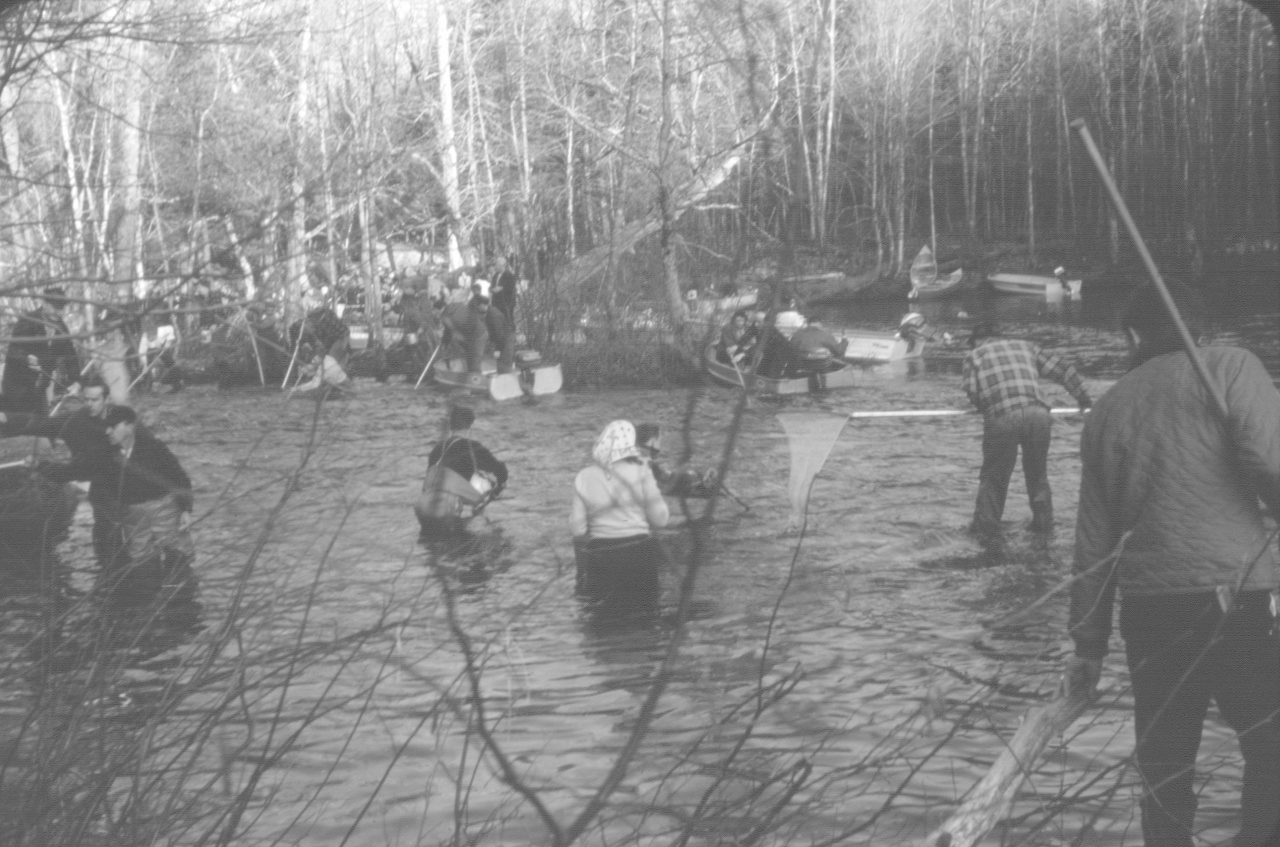
“Smelts are Runnin’!” A typical chaotic scene at Main Stream during the Annual Spring Smelt Run
(Courtesy of Dana Perkins)
*
While the 2 man-made dams on Sebasticook River were built to control the water flow from Great Moose Lake, nature often reminds the residents of Hartland just who really is in control of the elements. Several major flooding events over the centuries have occurred since the dams were first built including one of the more pictorial documented events of The Great Flood of 1923.
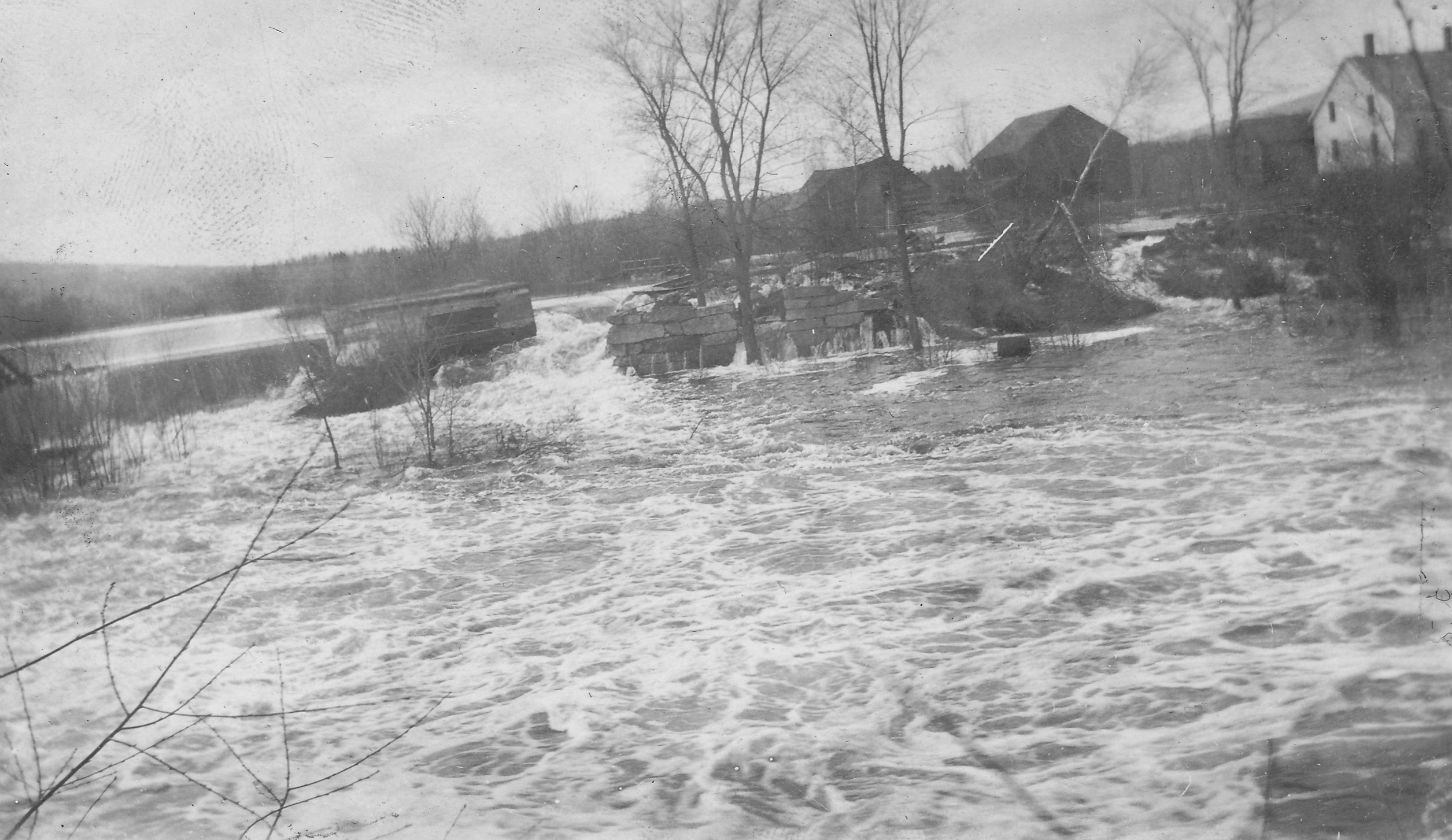
Upper Dam – Great Flood of 1923
*
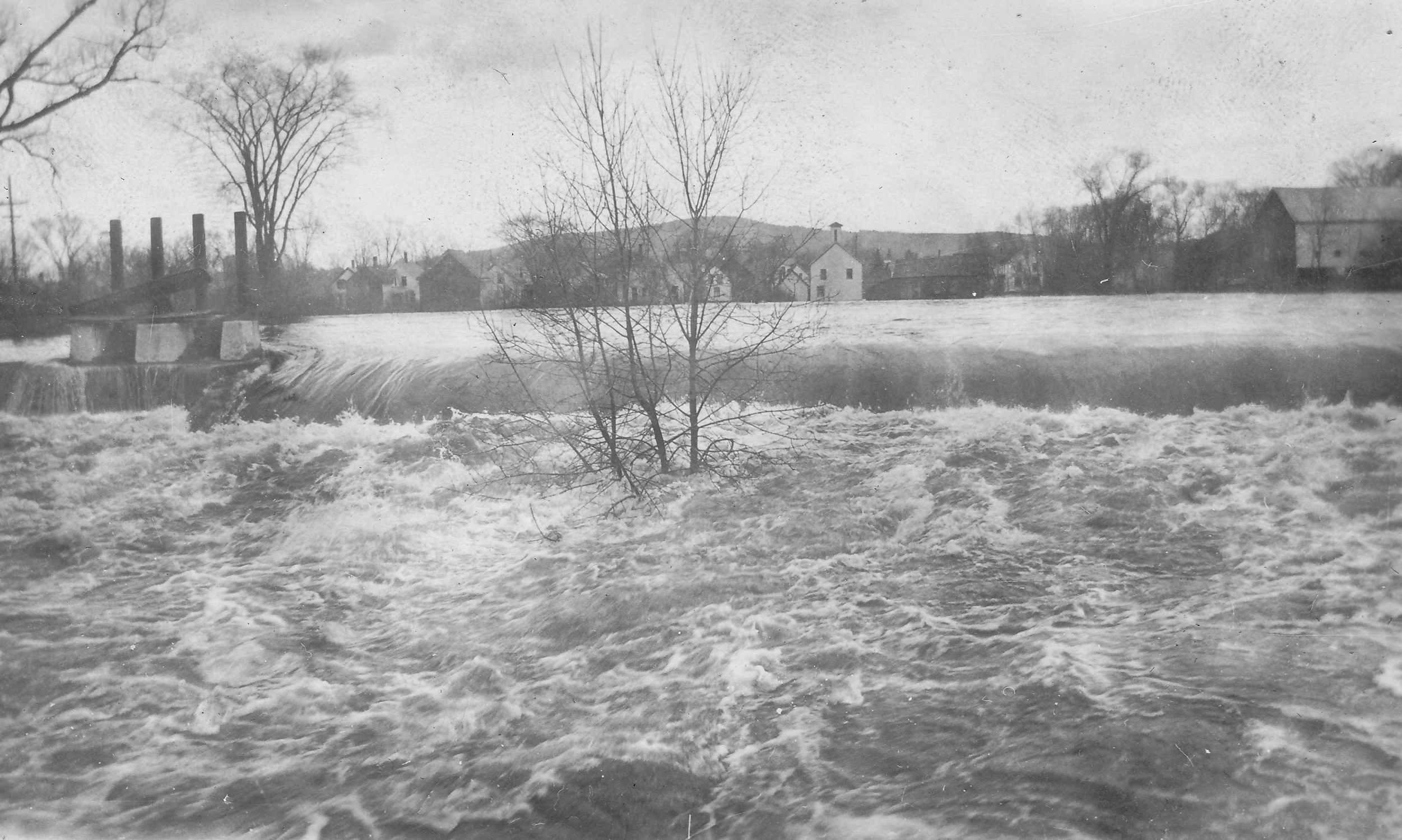
Lower Dam – Great Flood of 1923
*
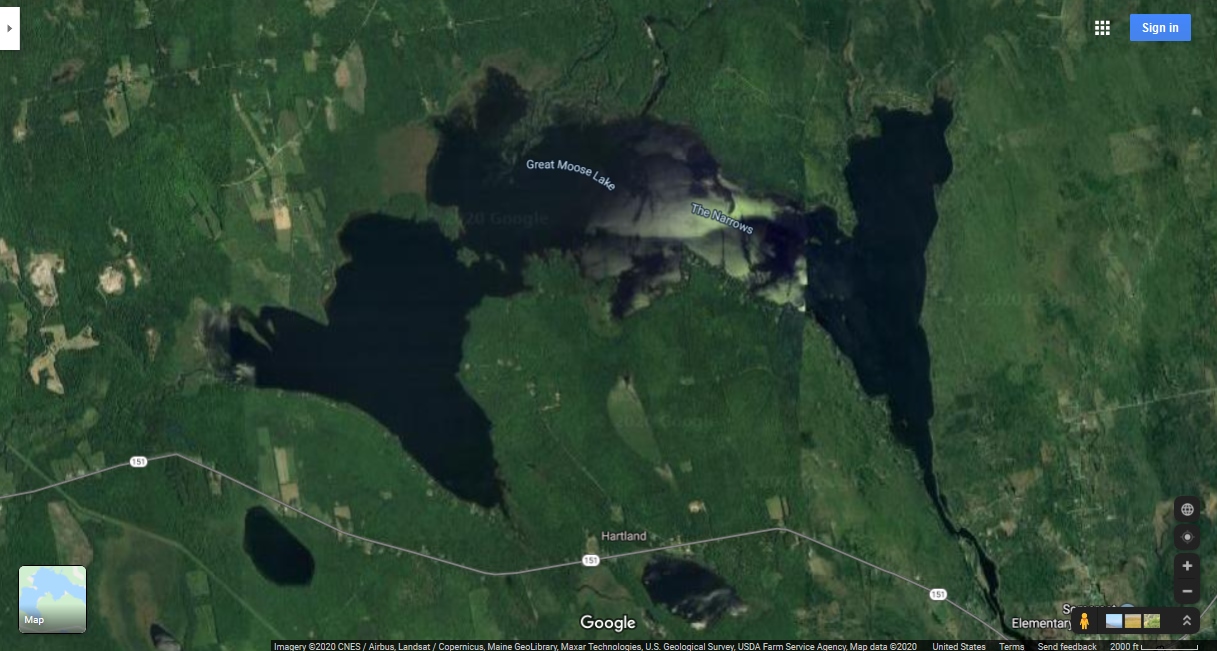
Great Moose Lake
(Google Maps 2020)